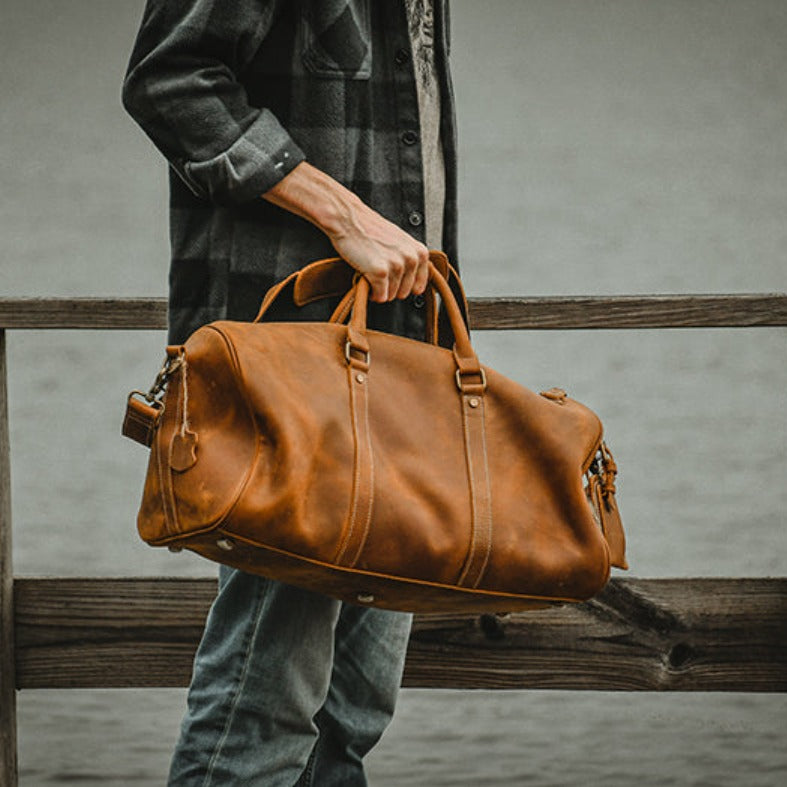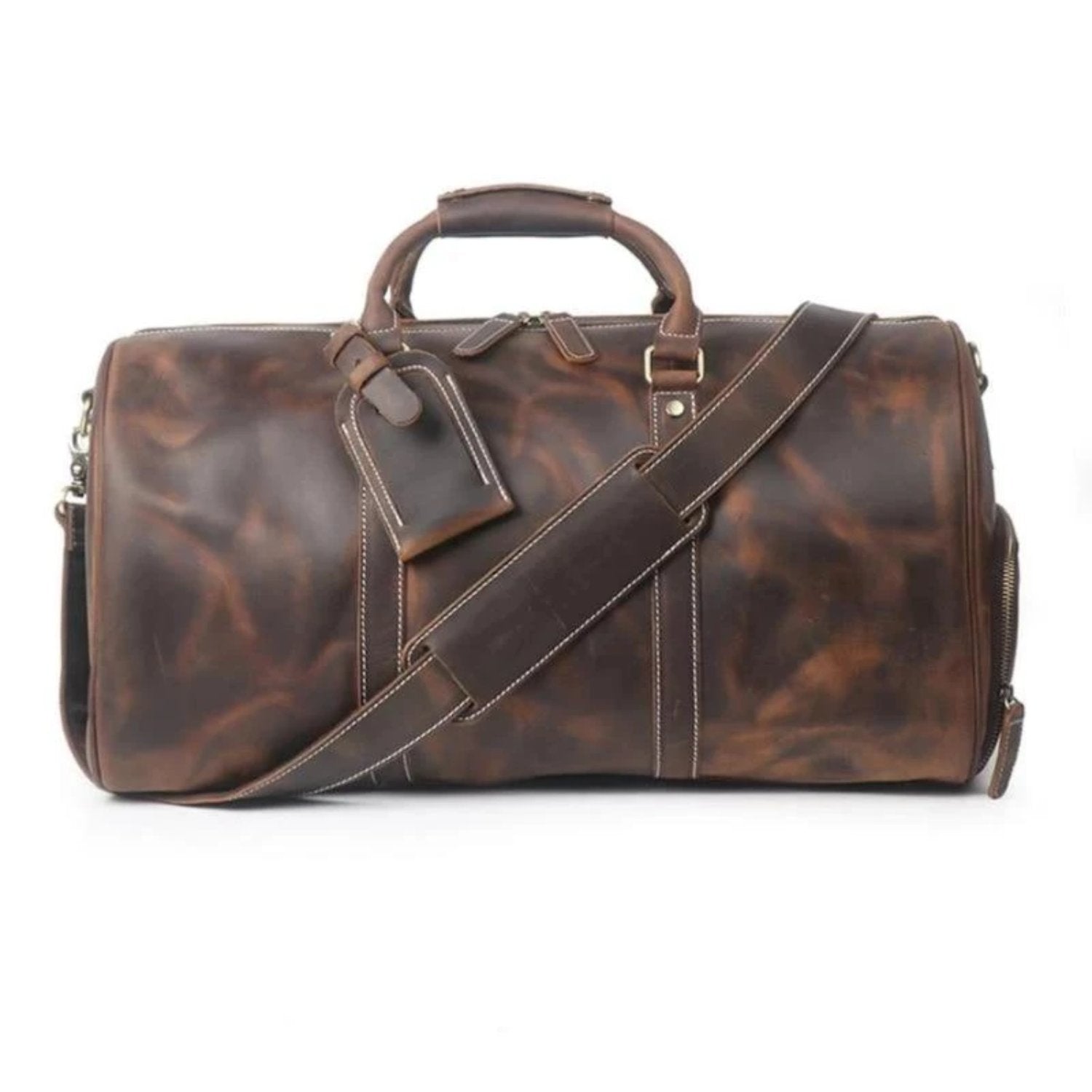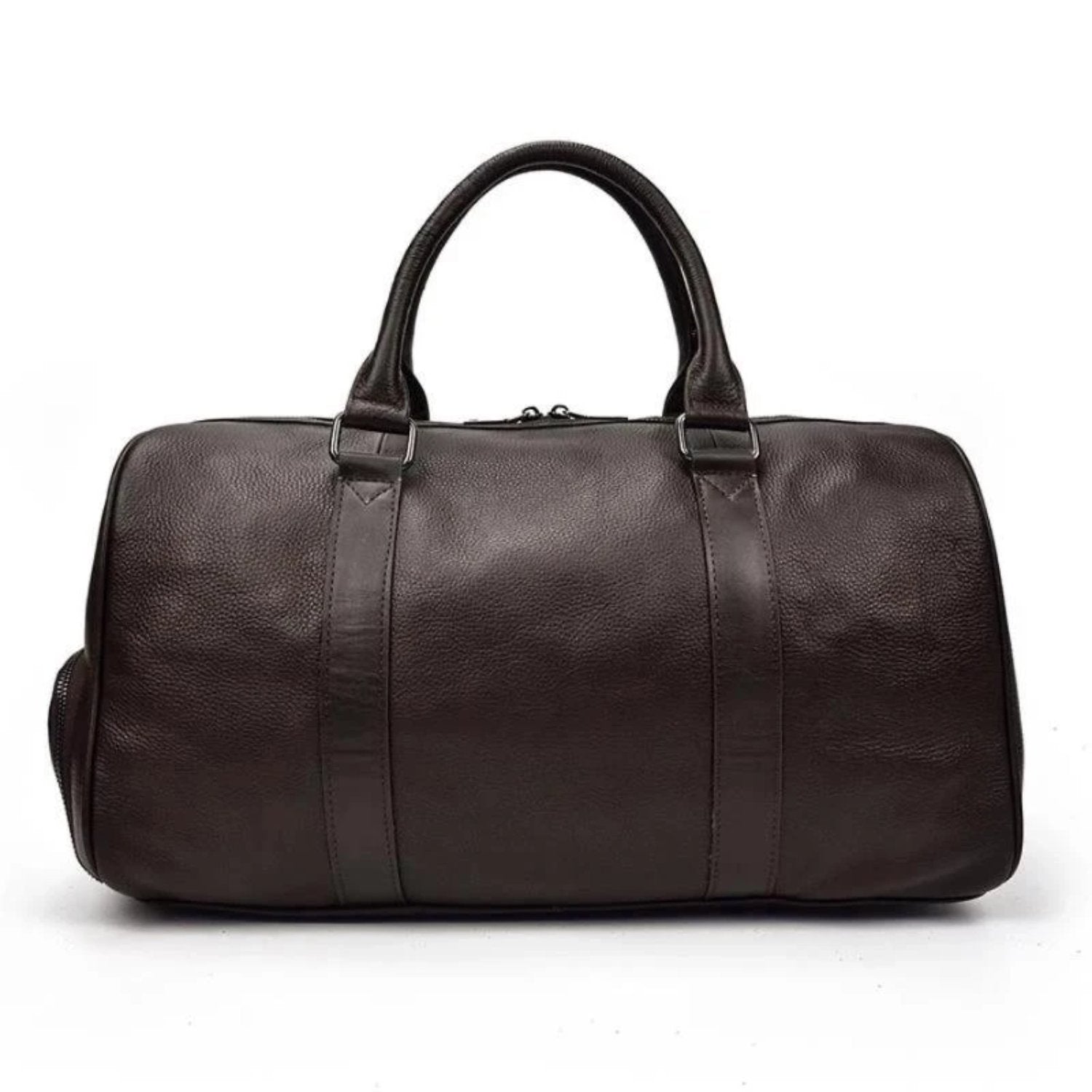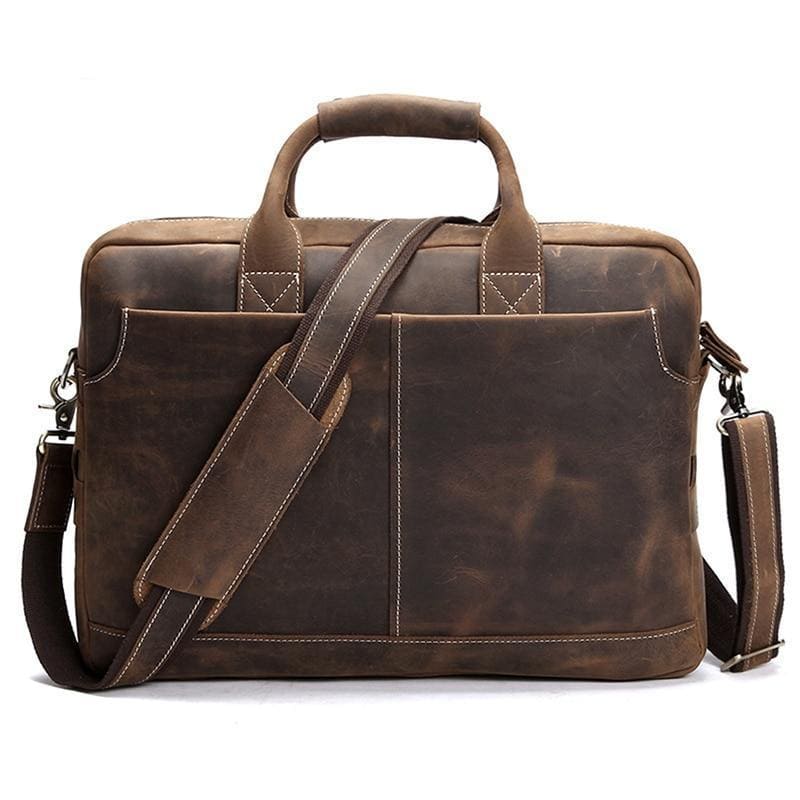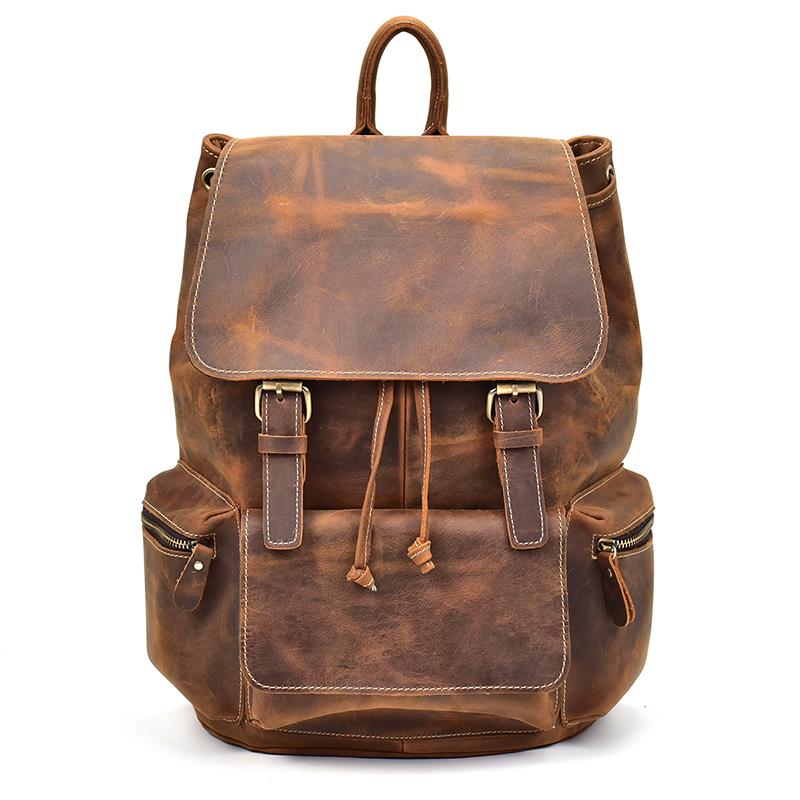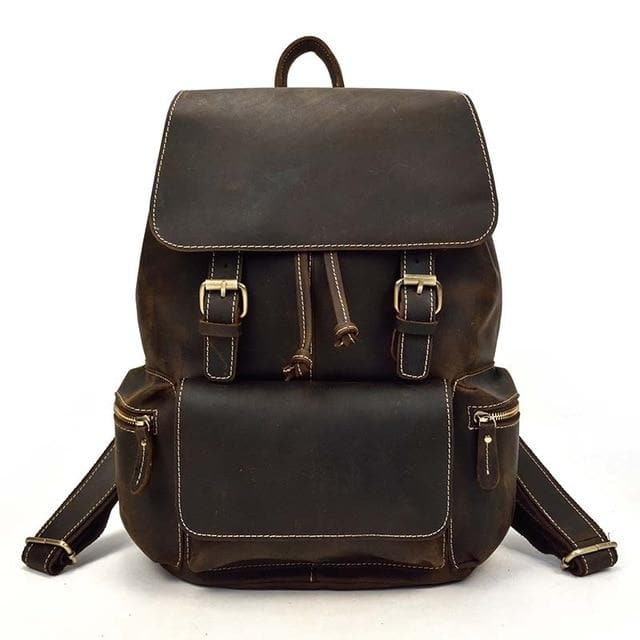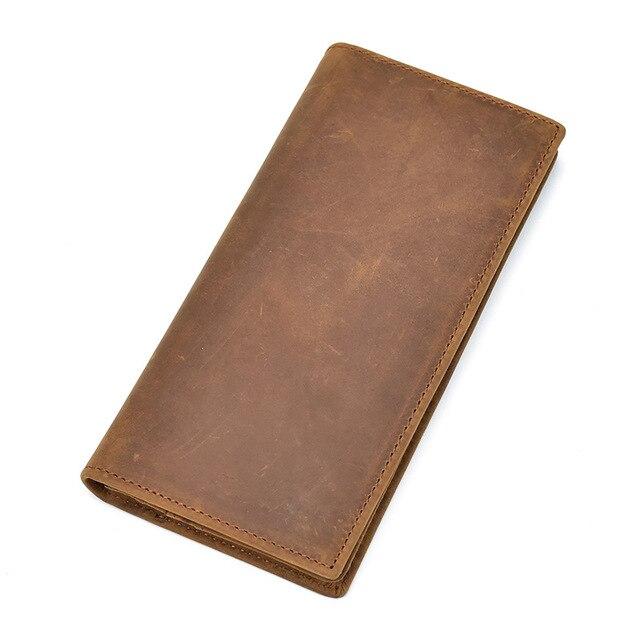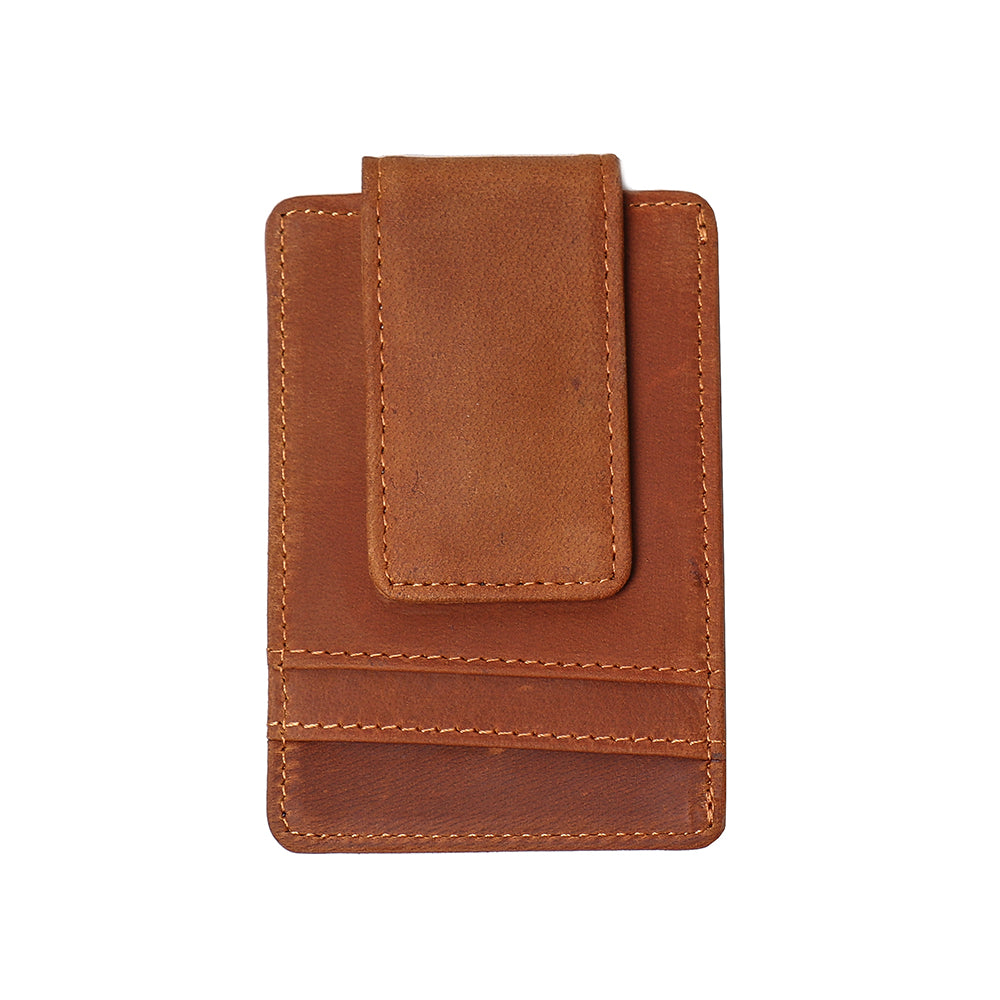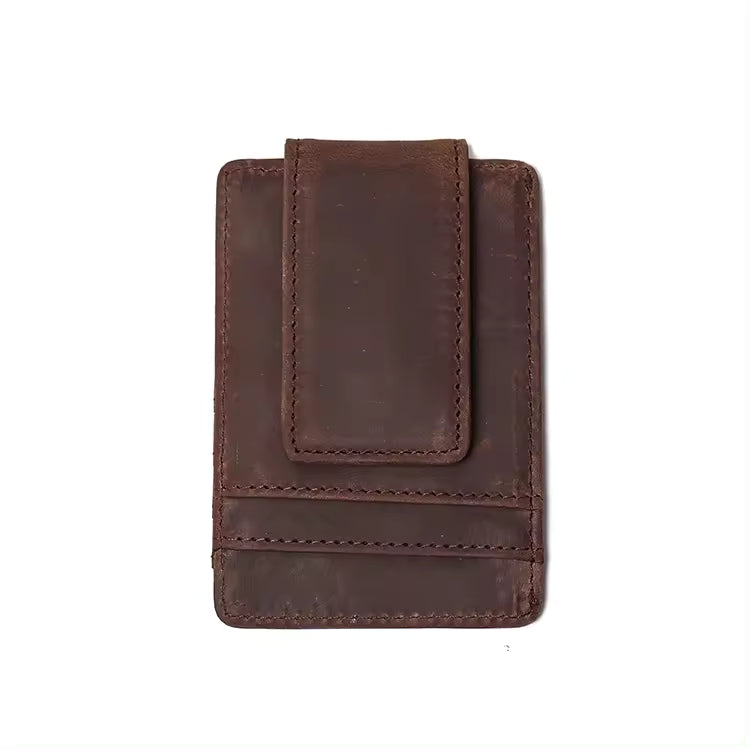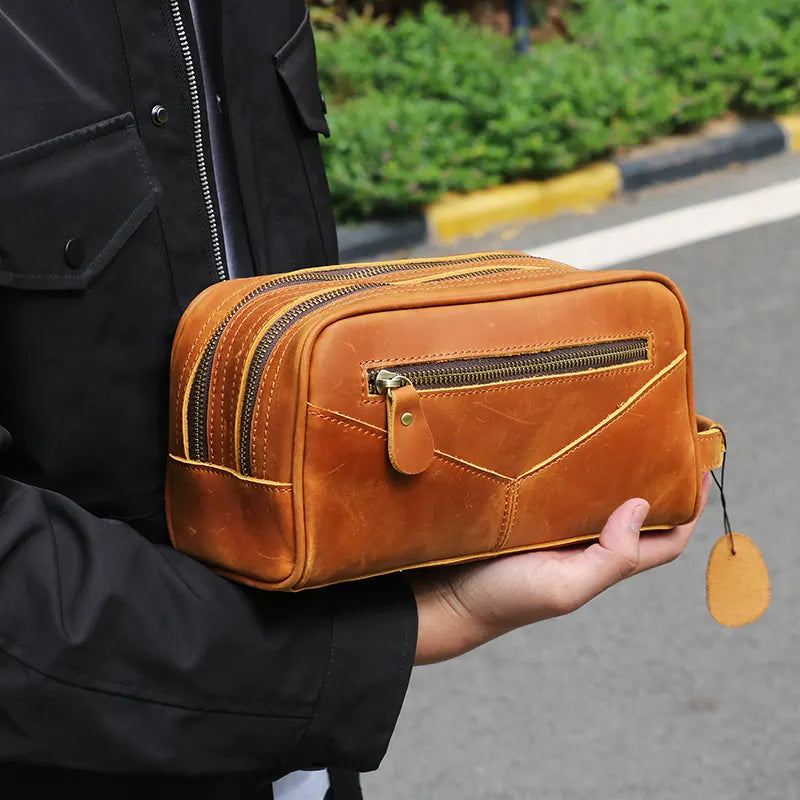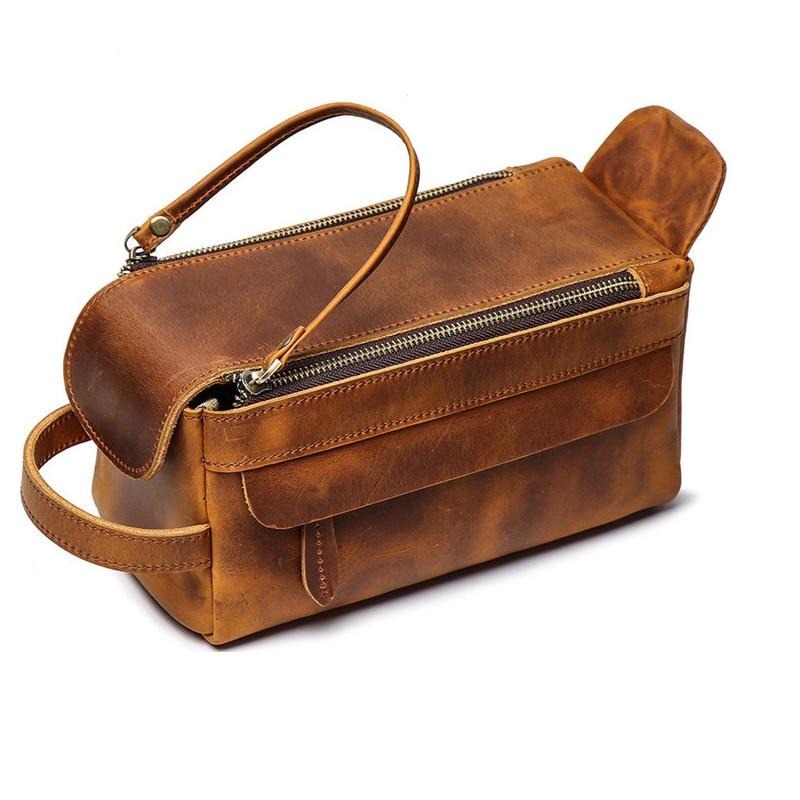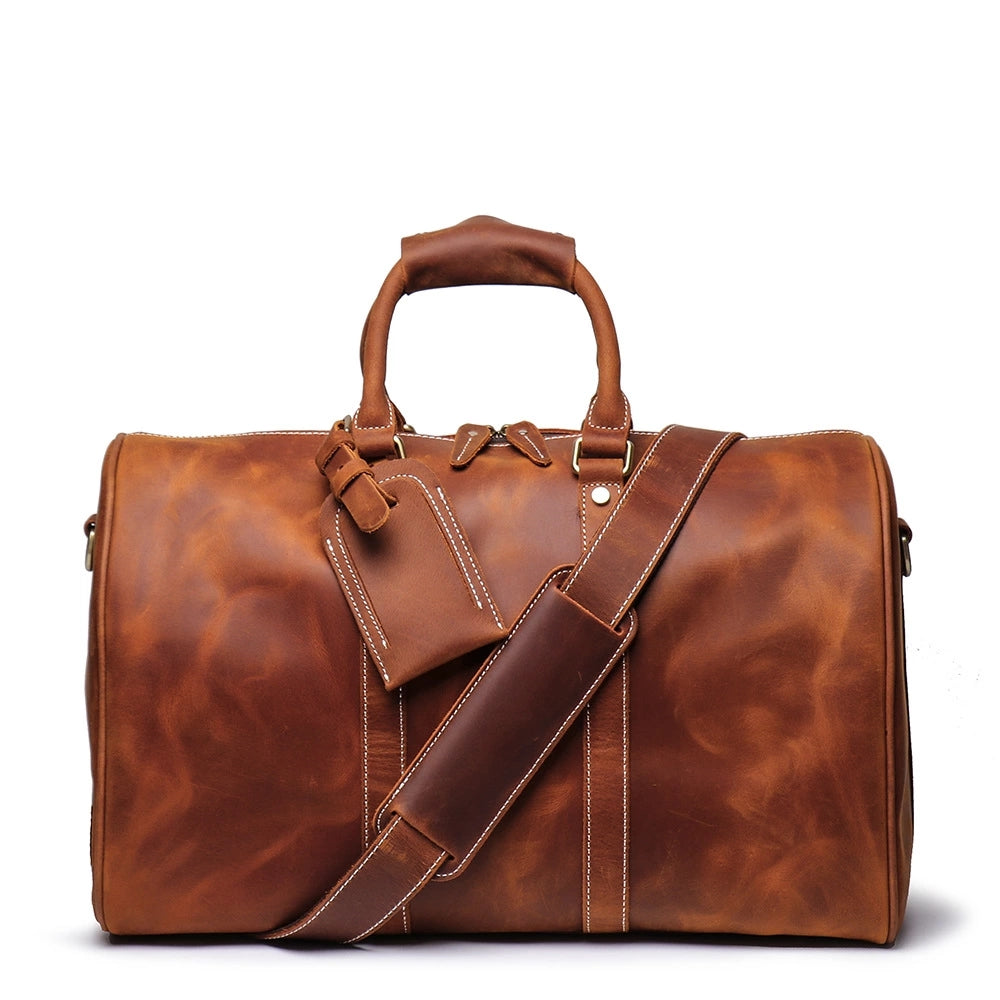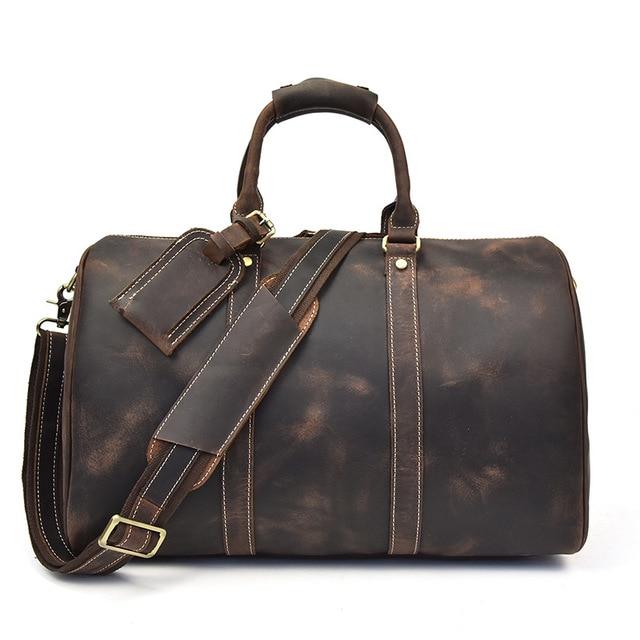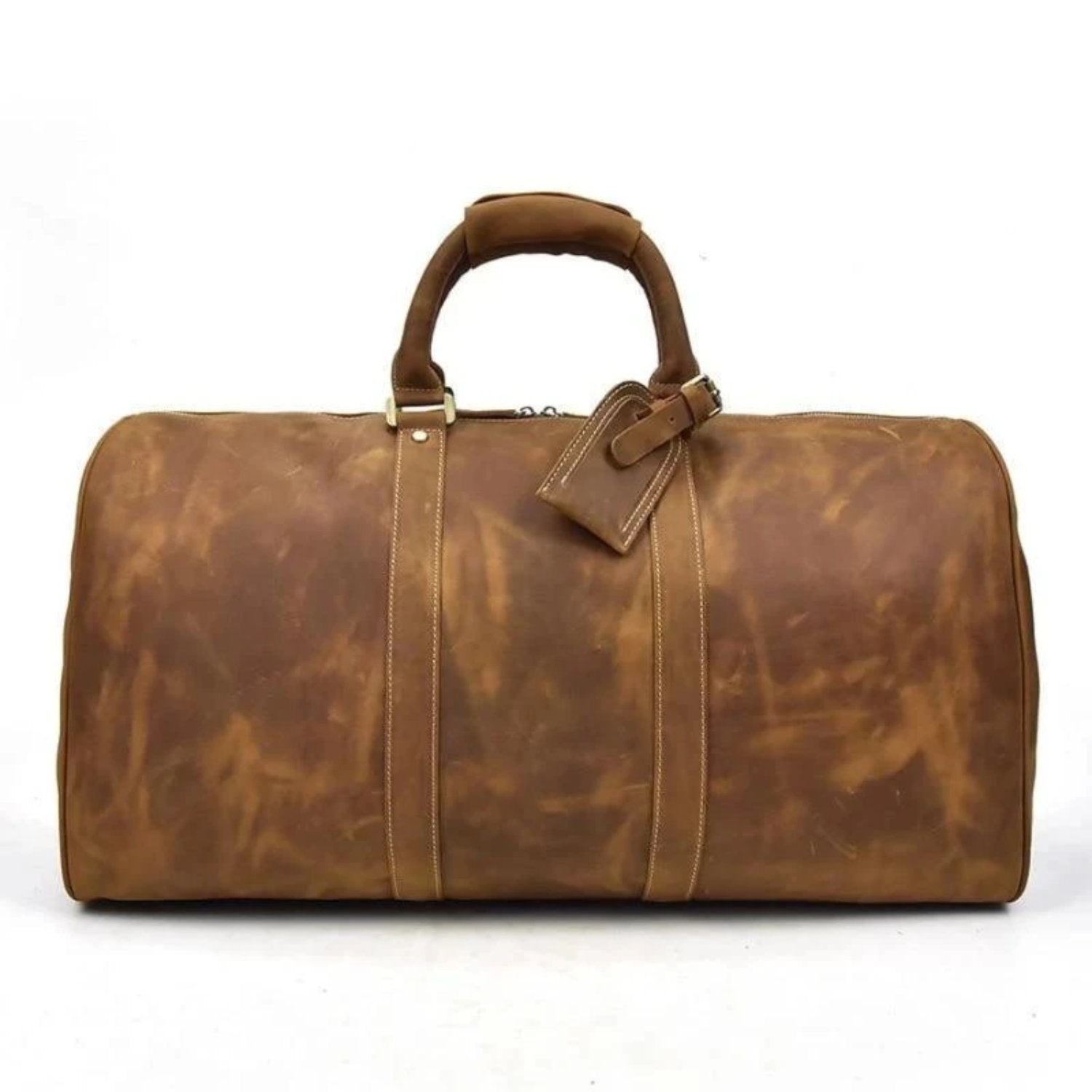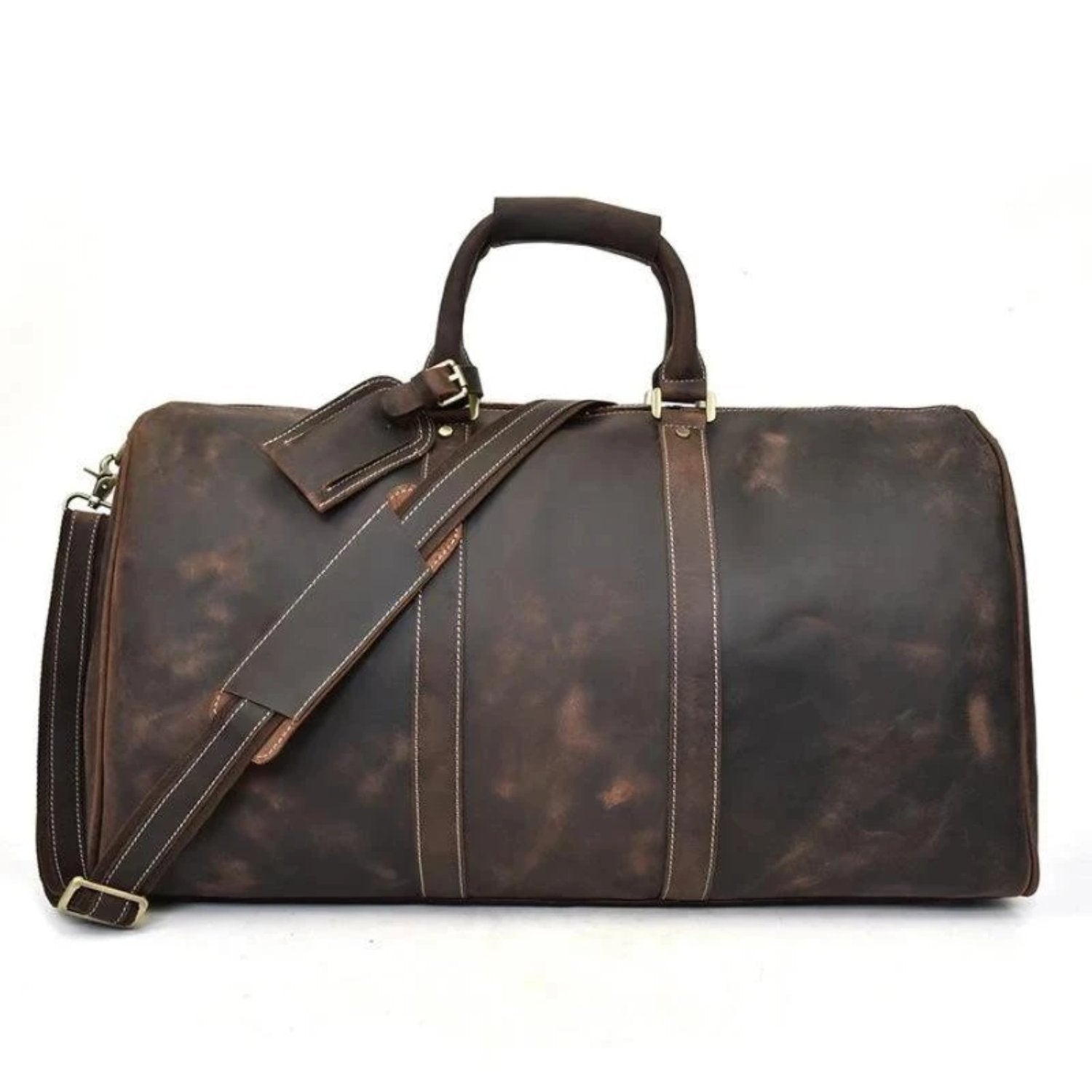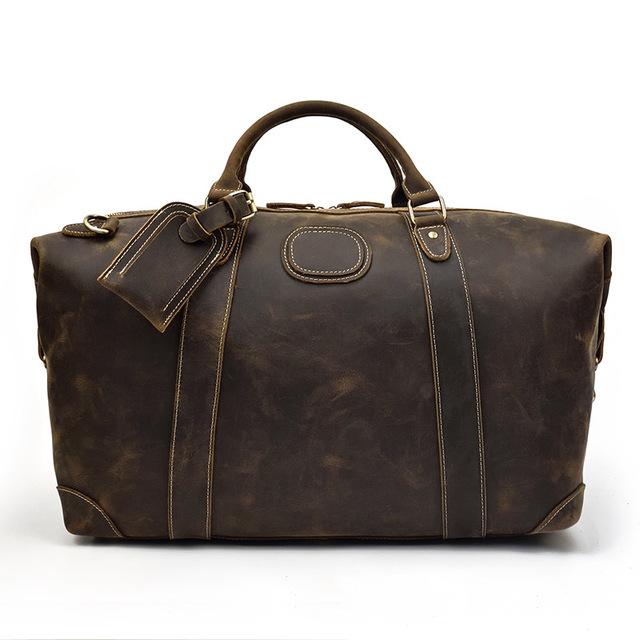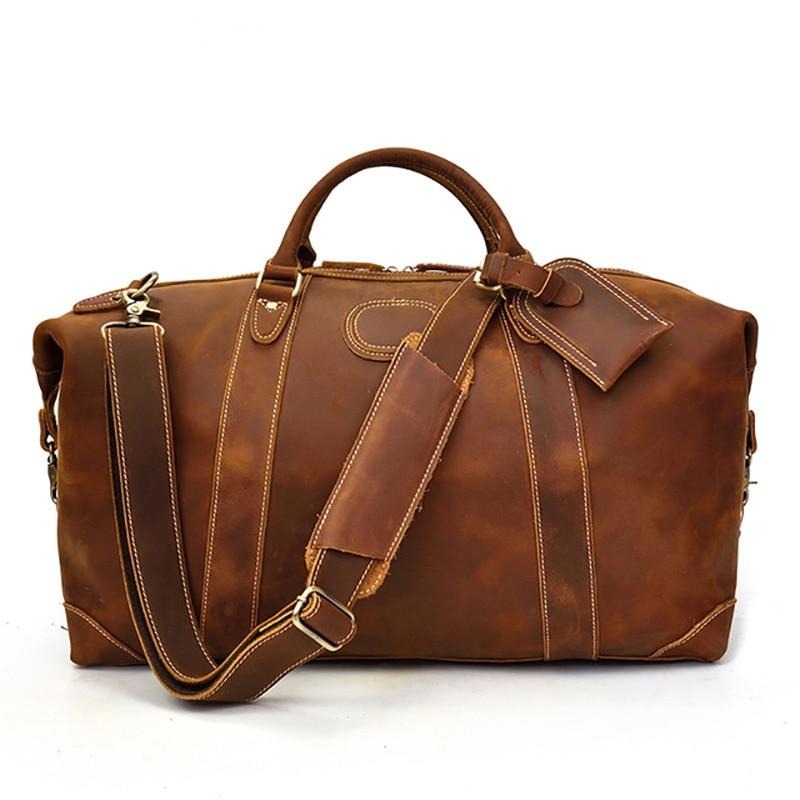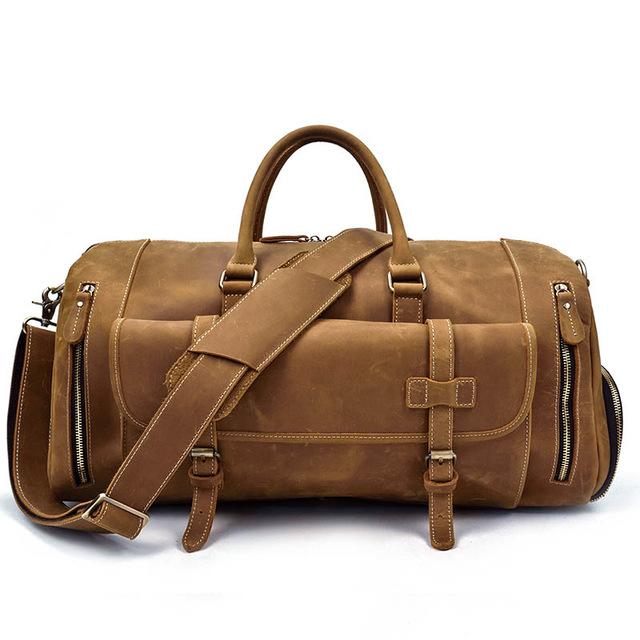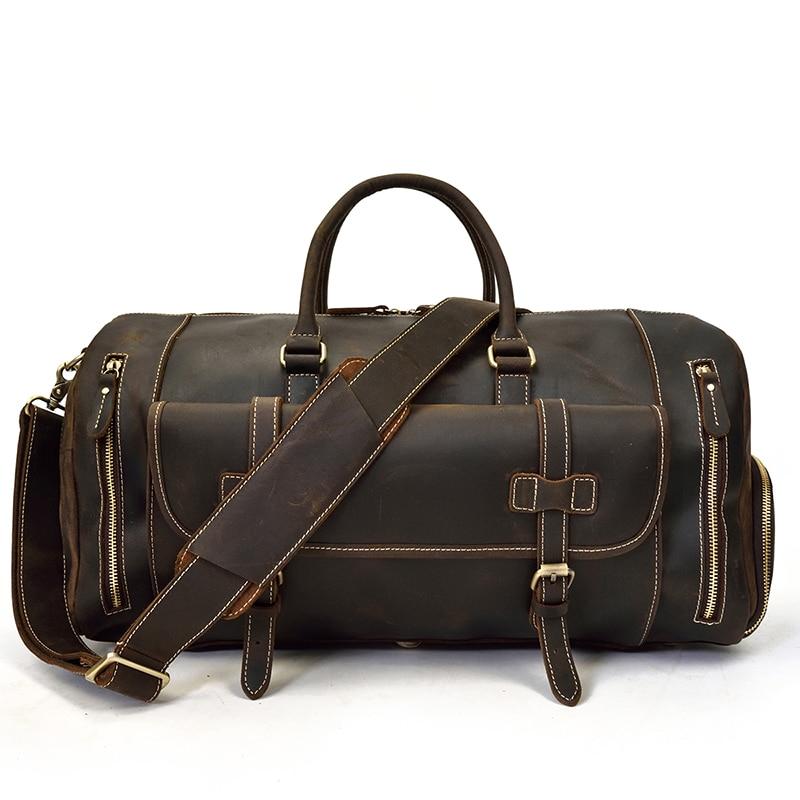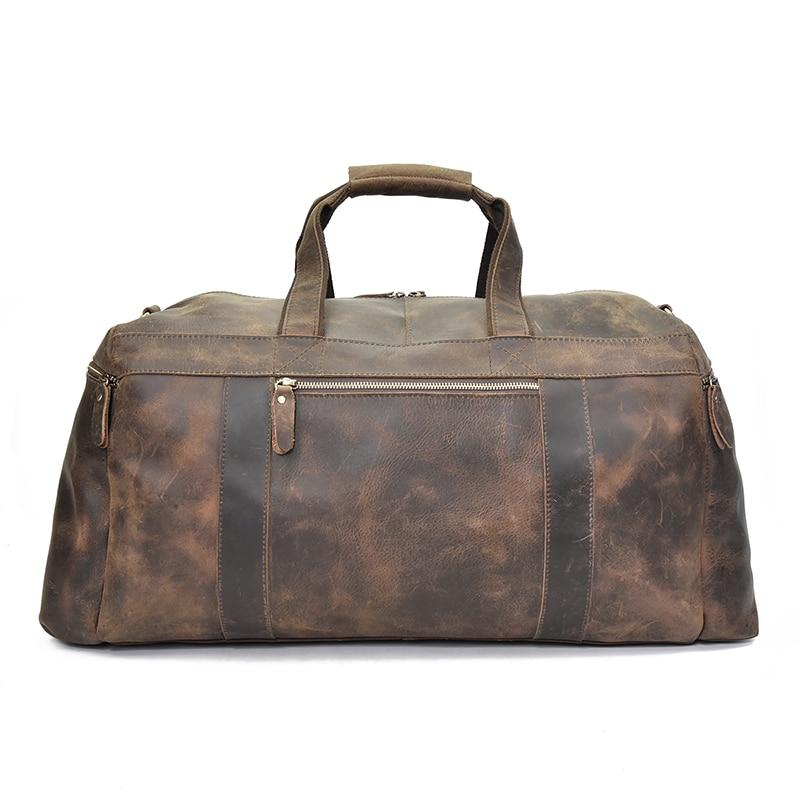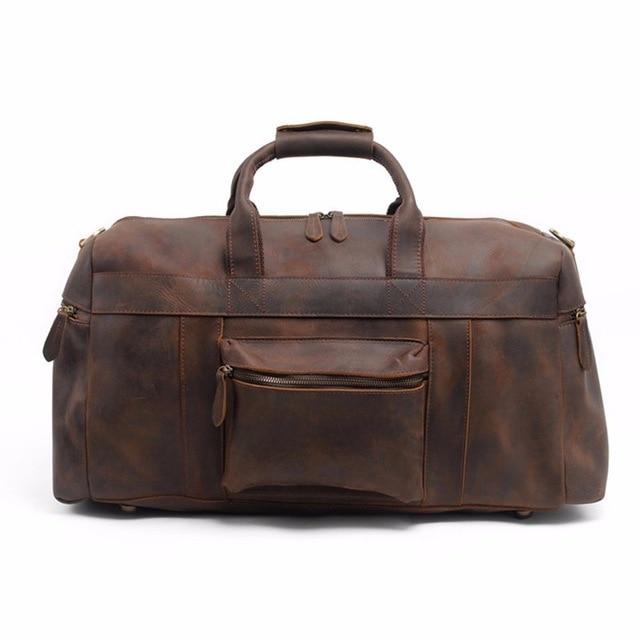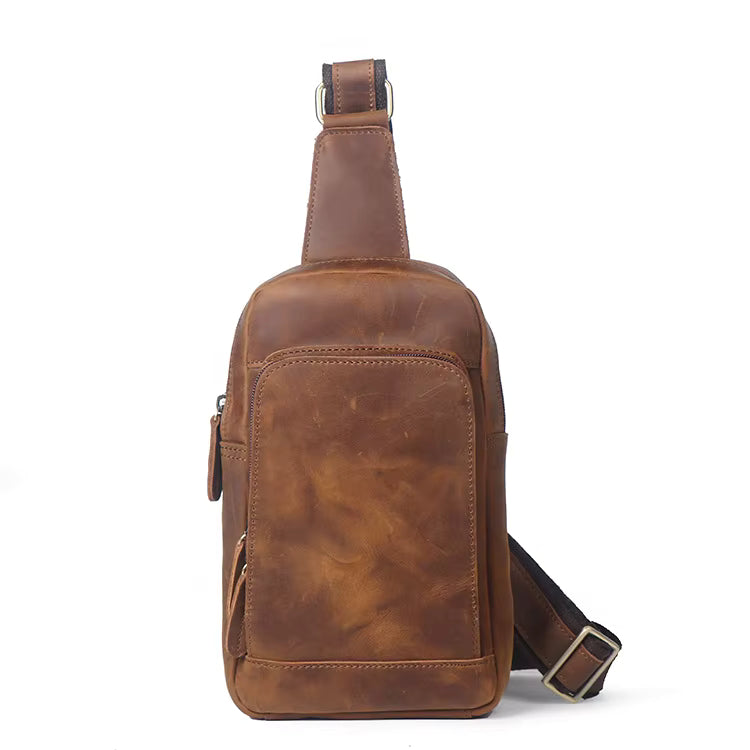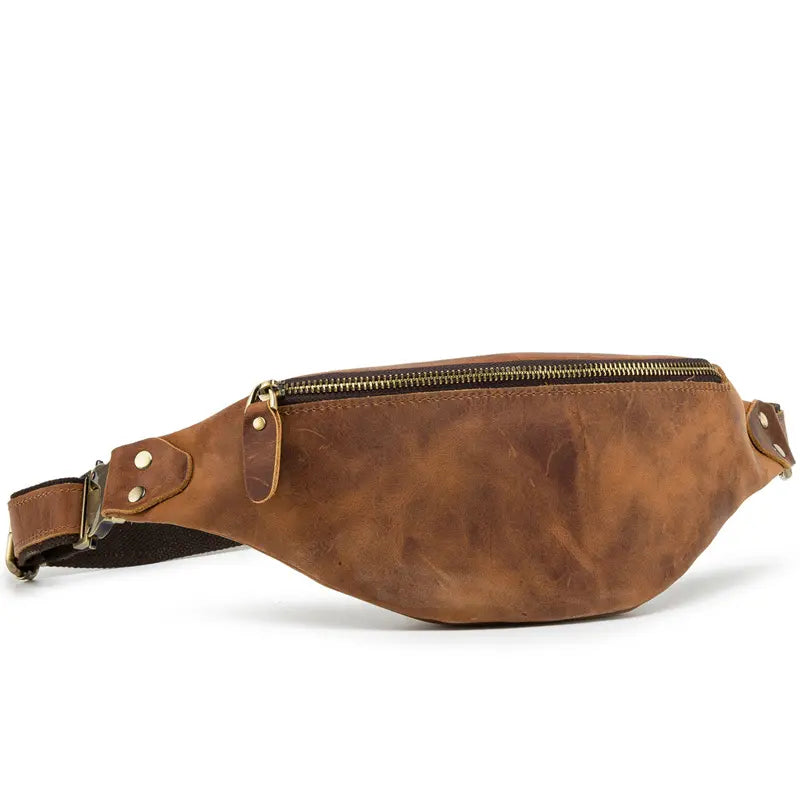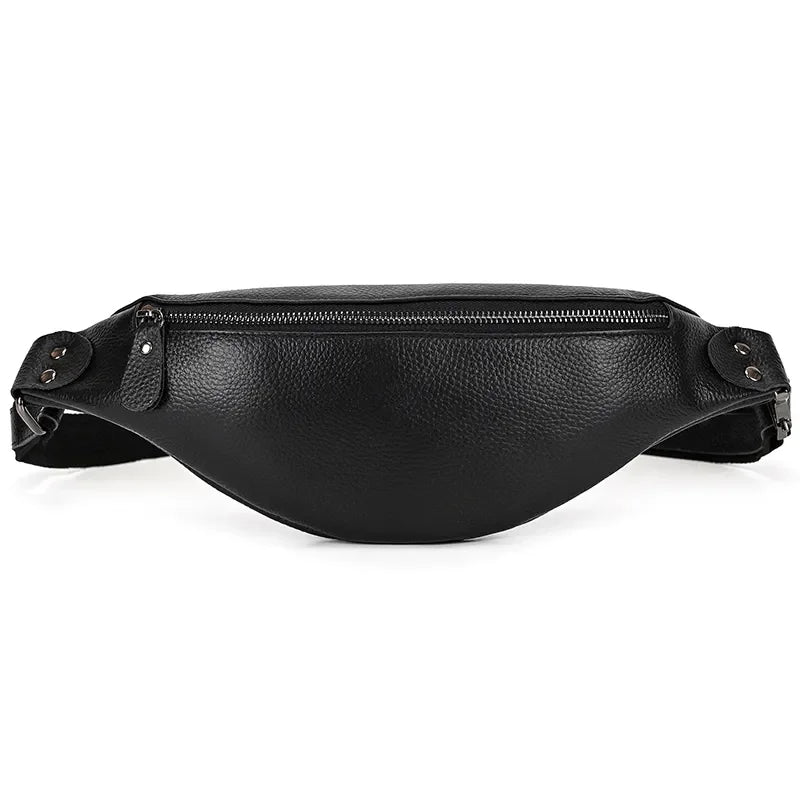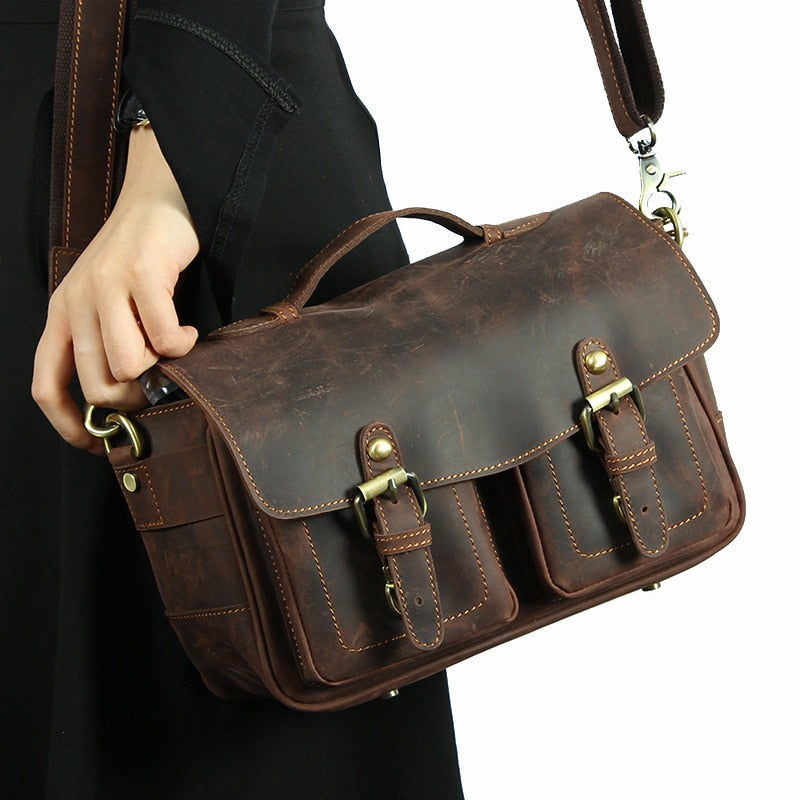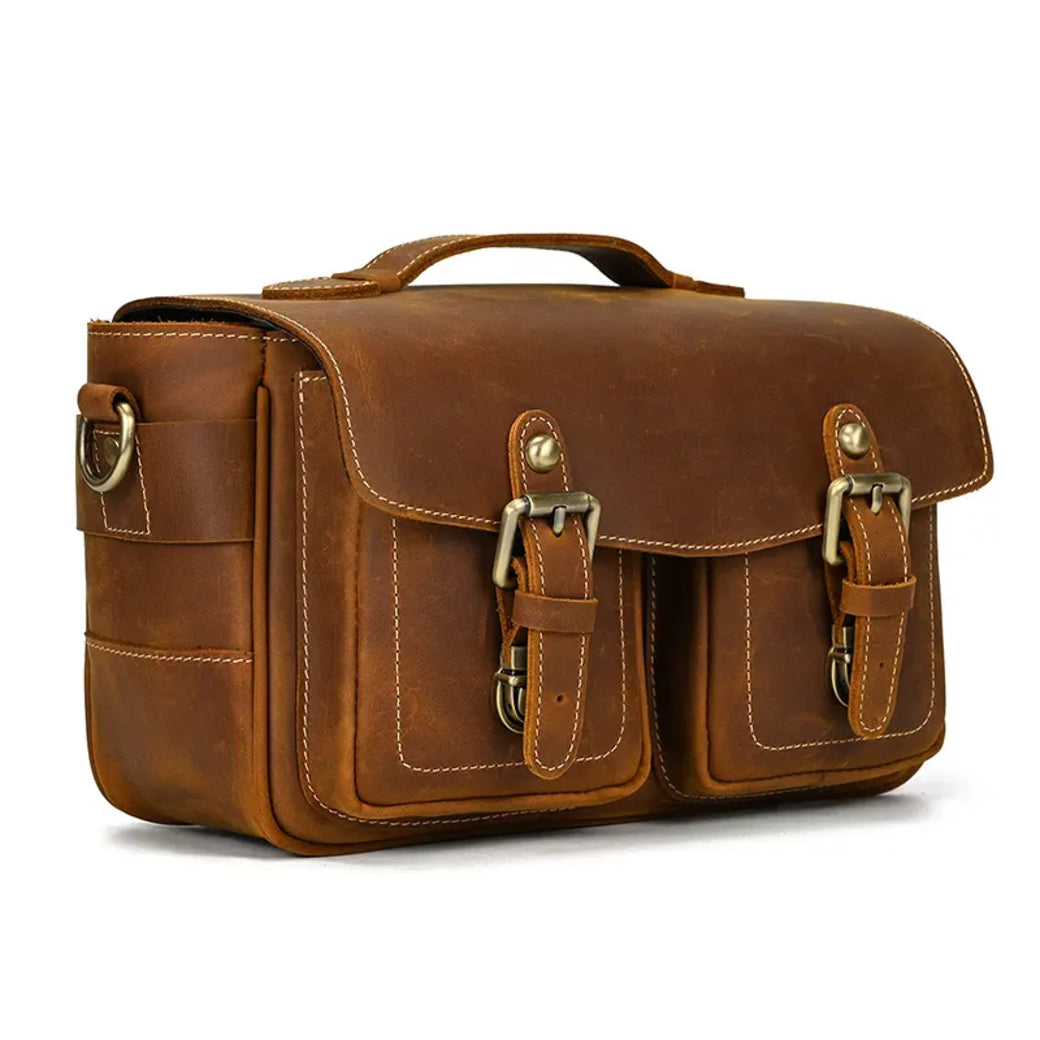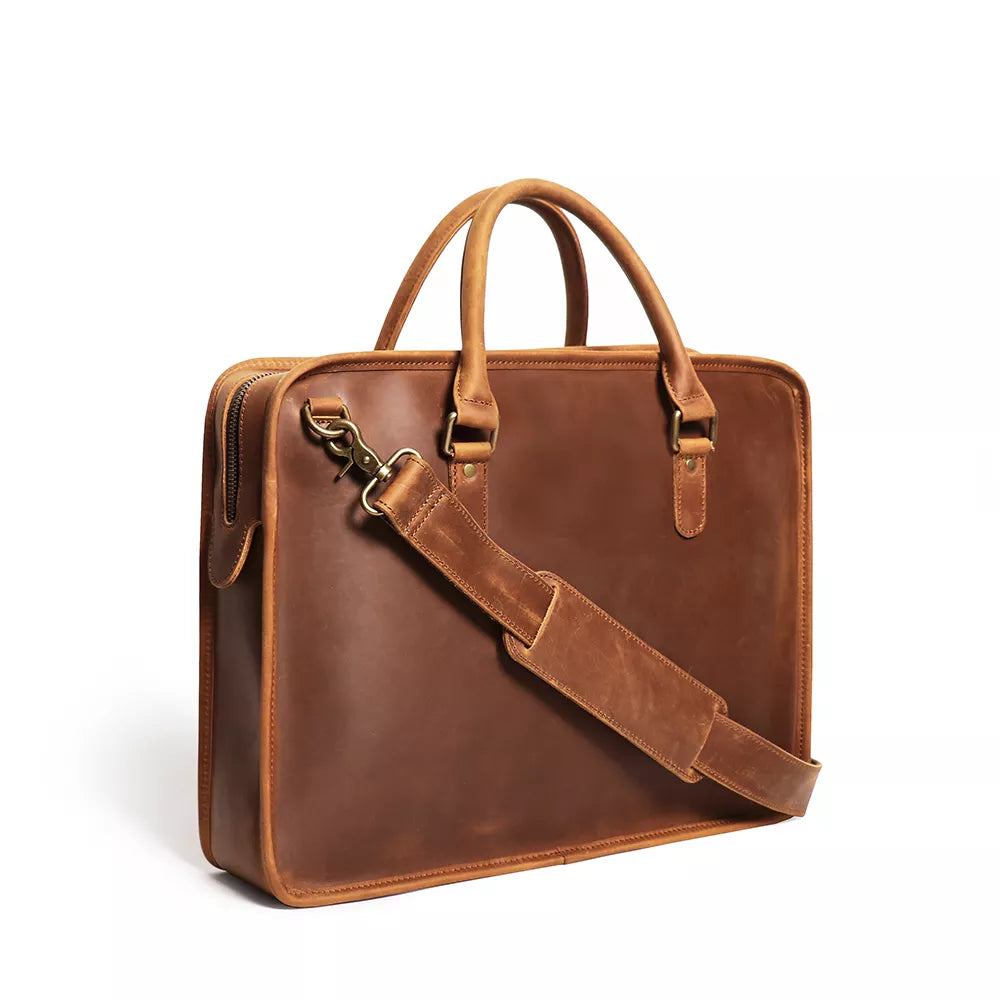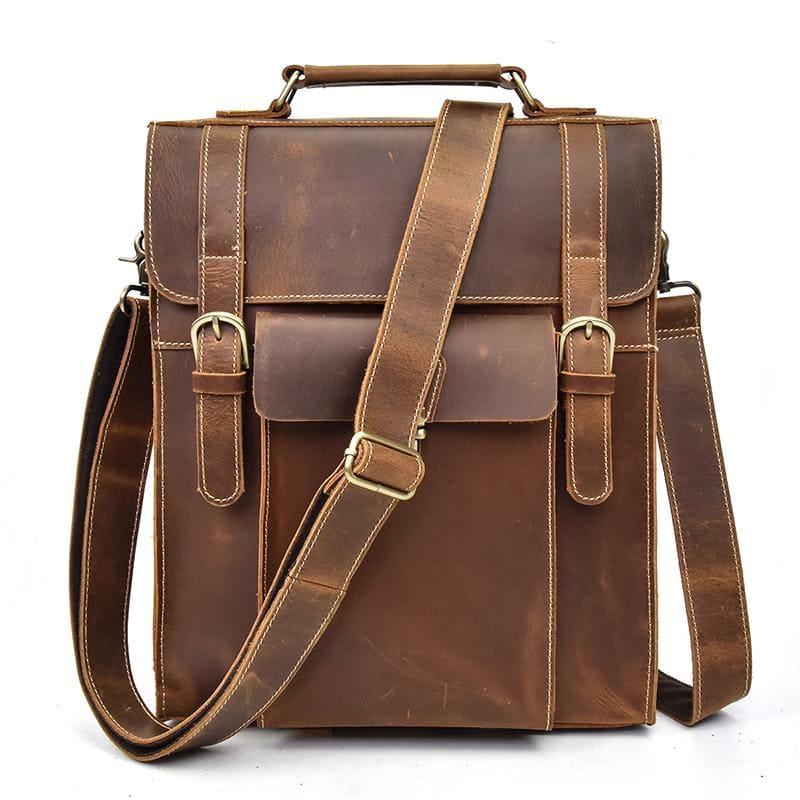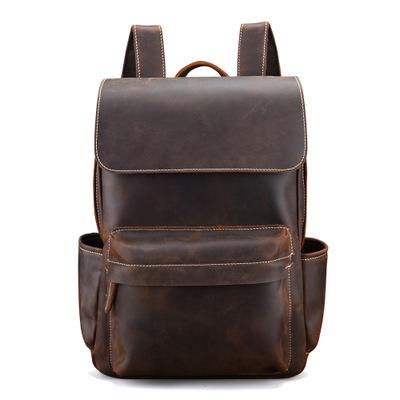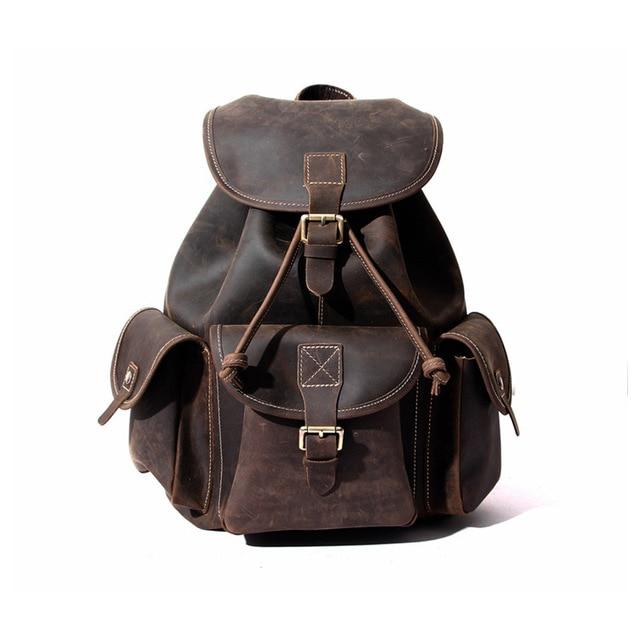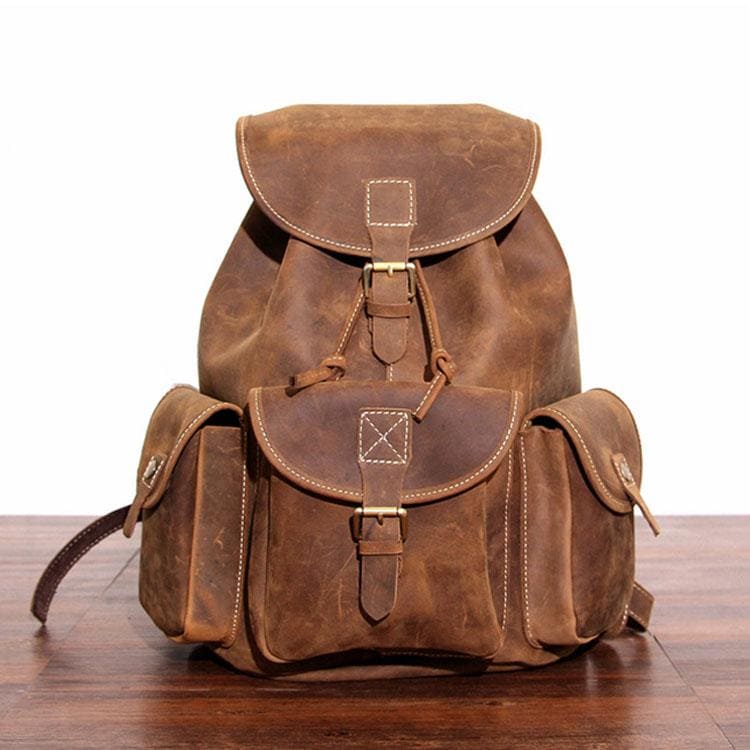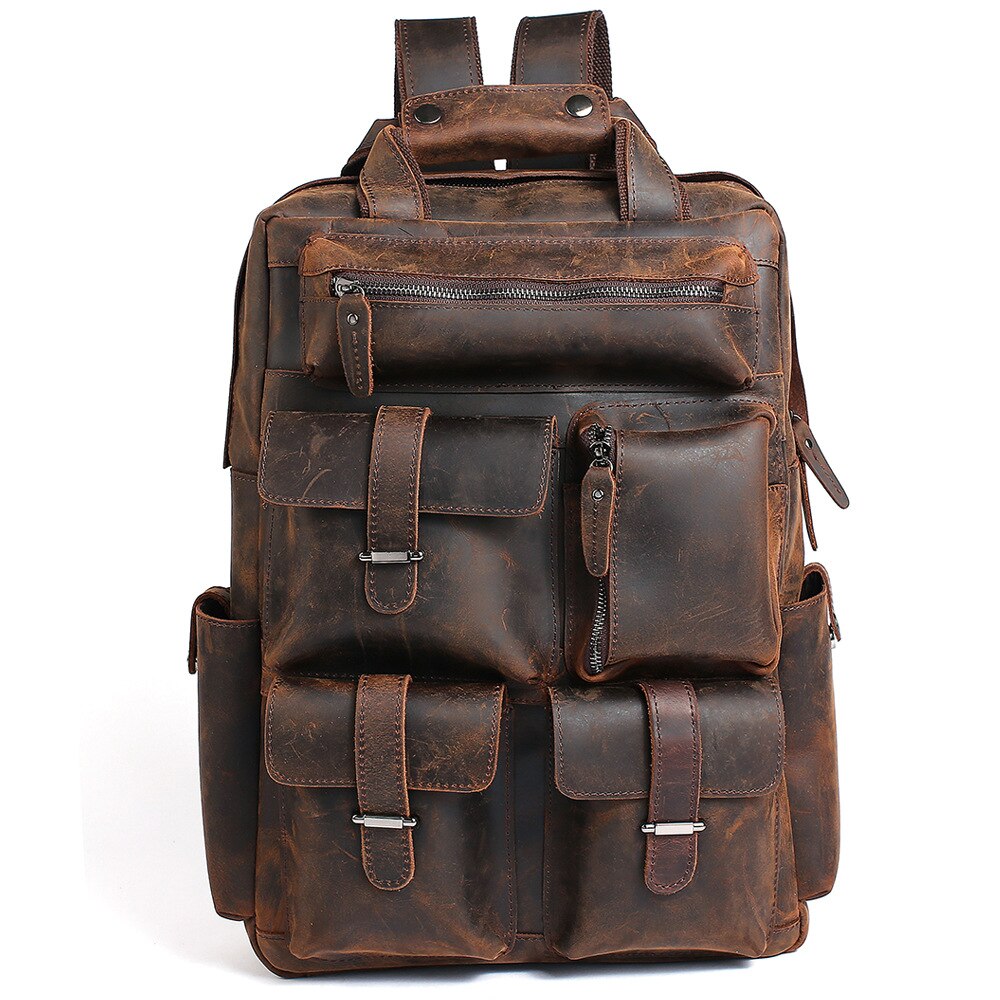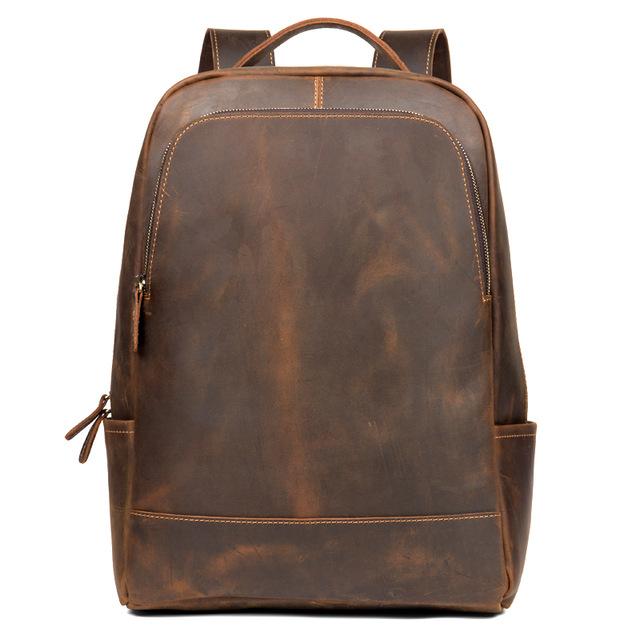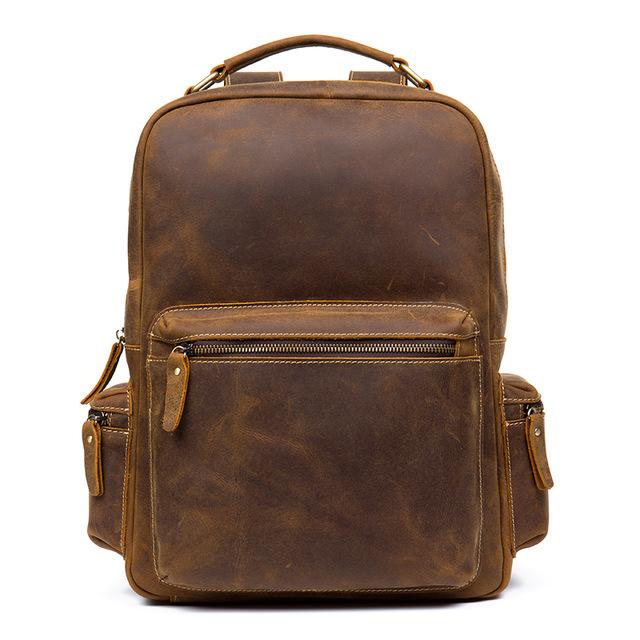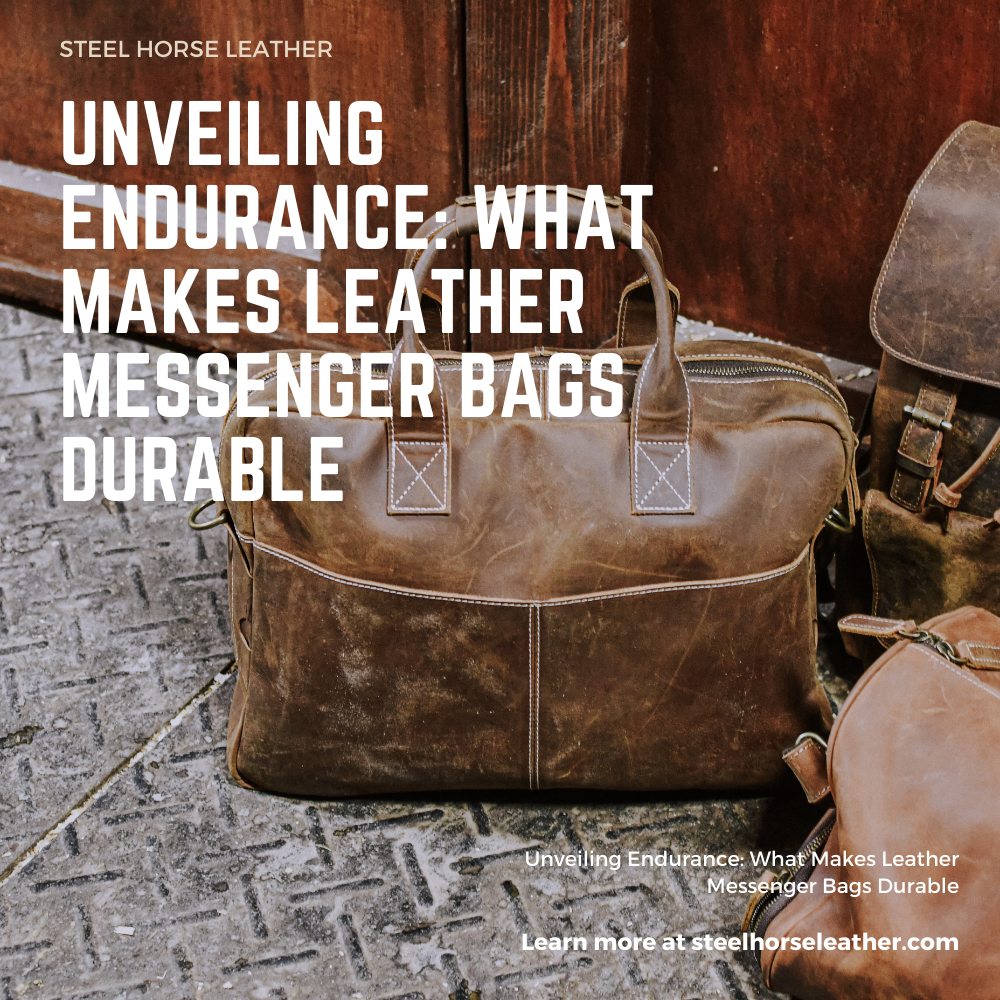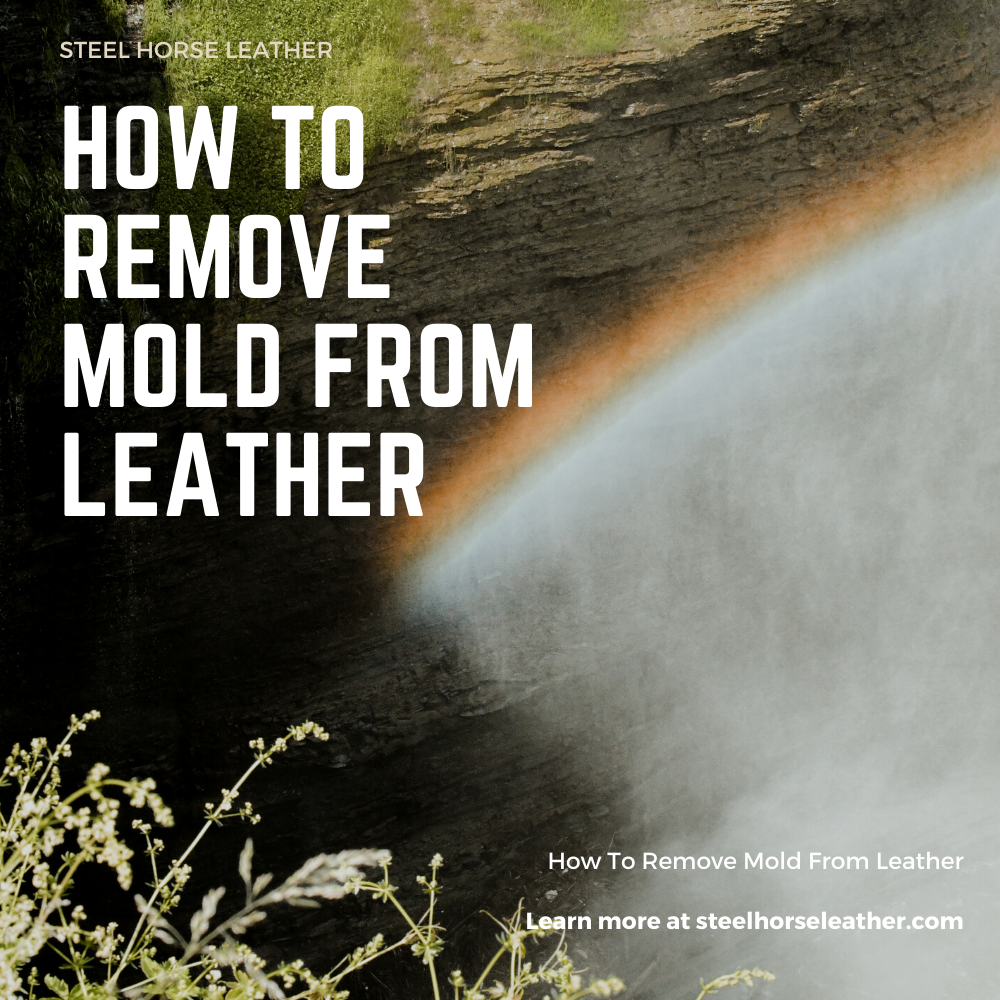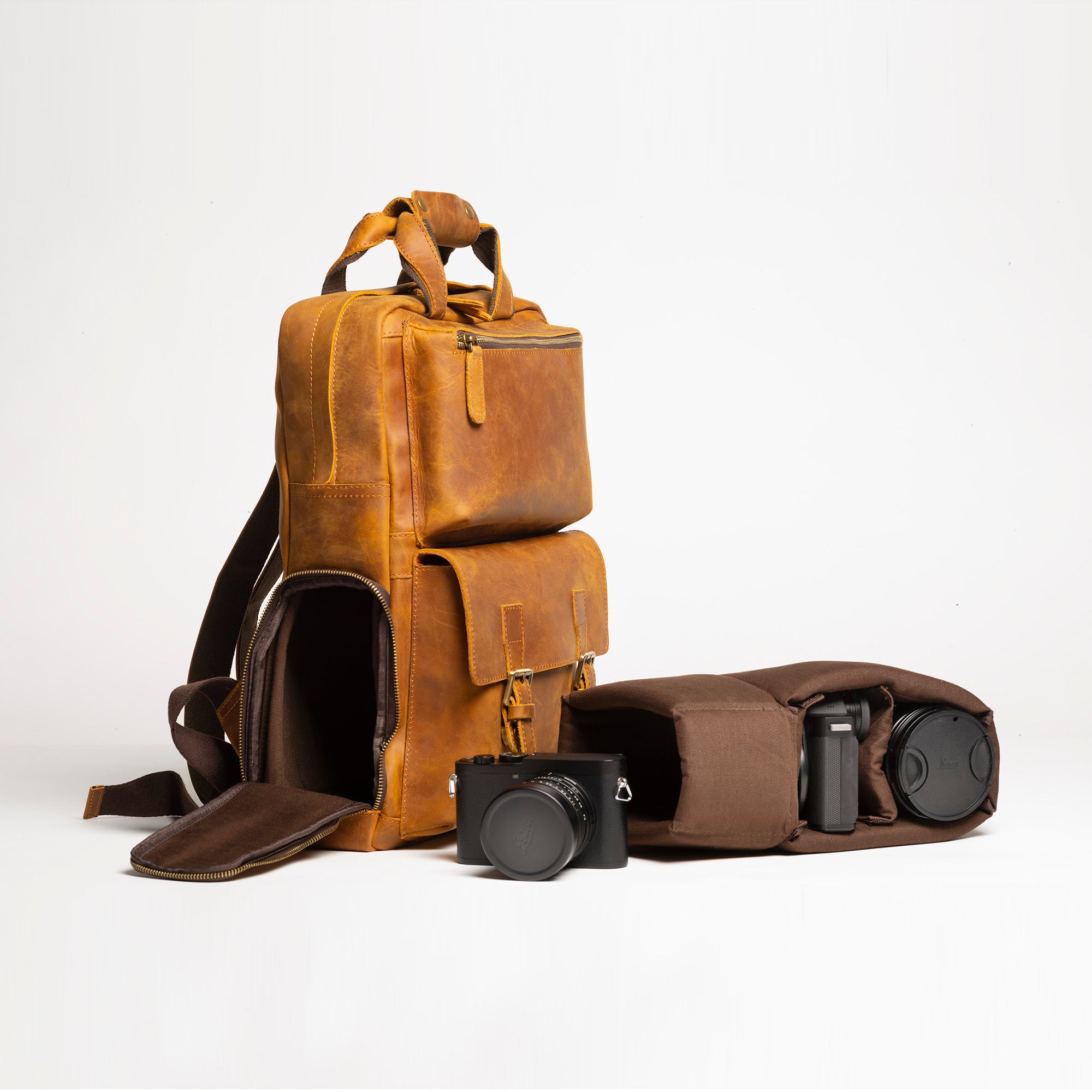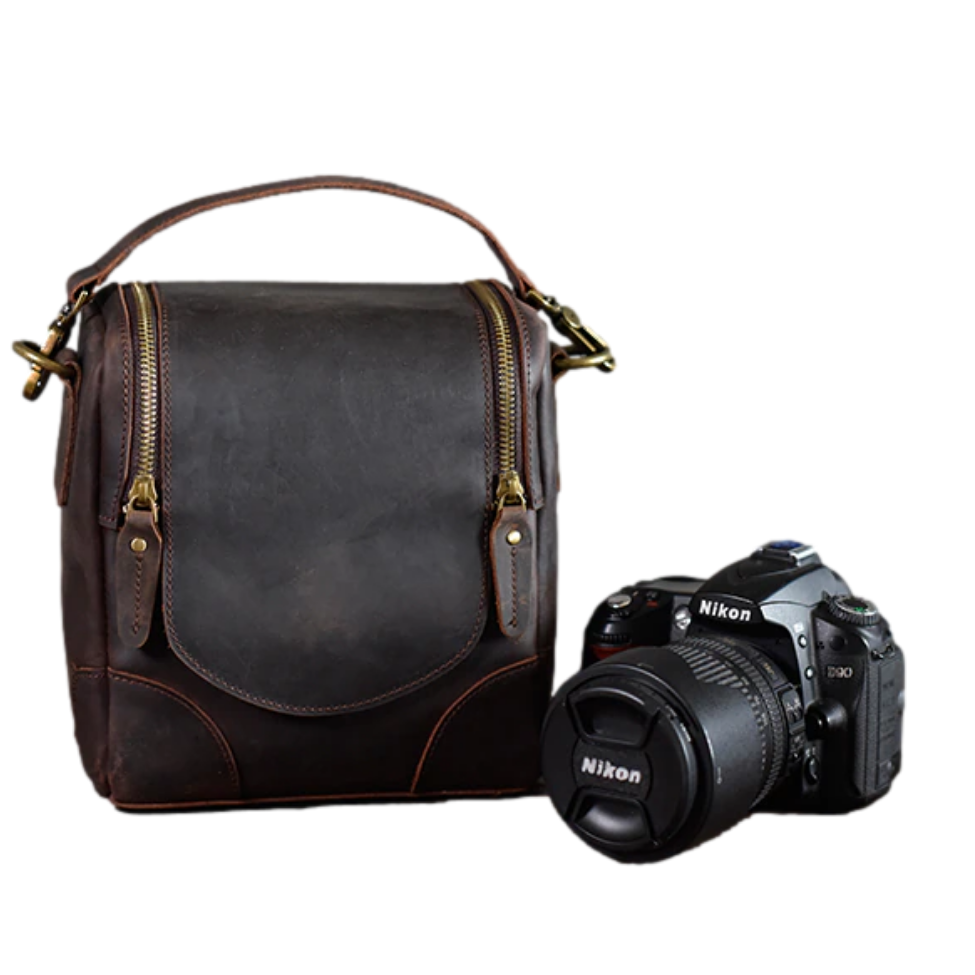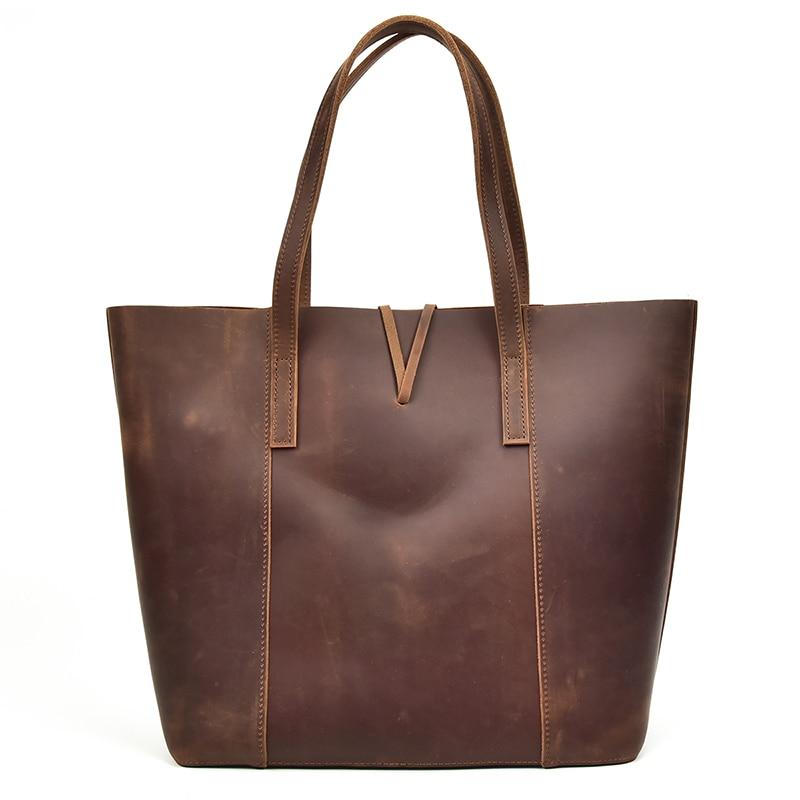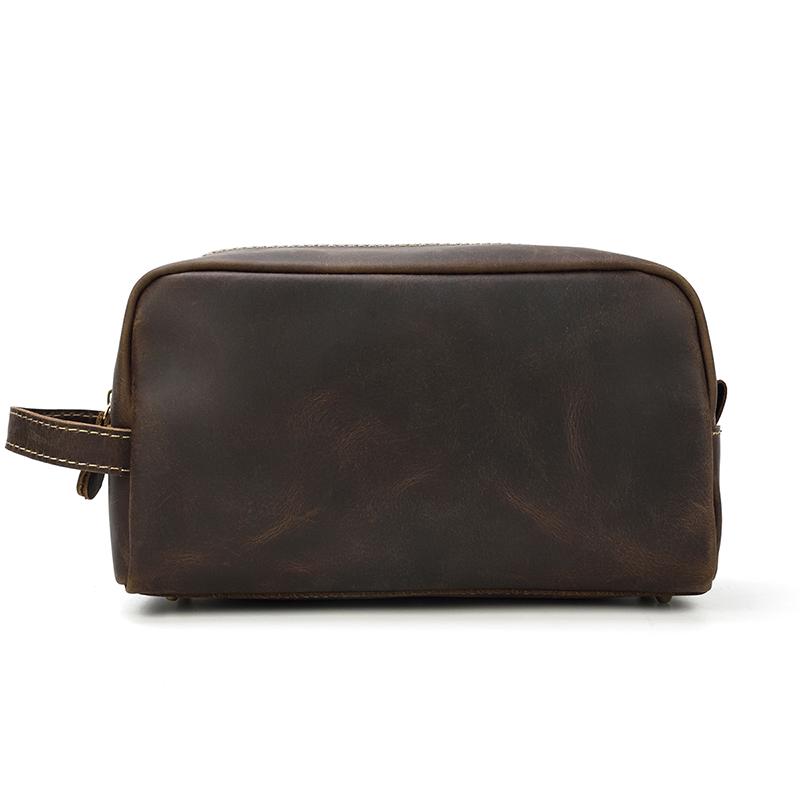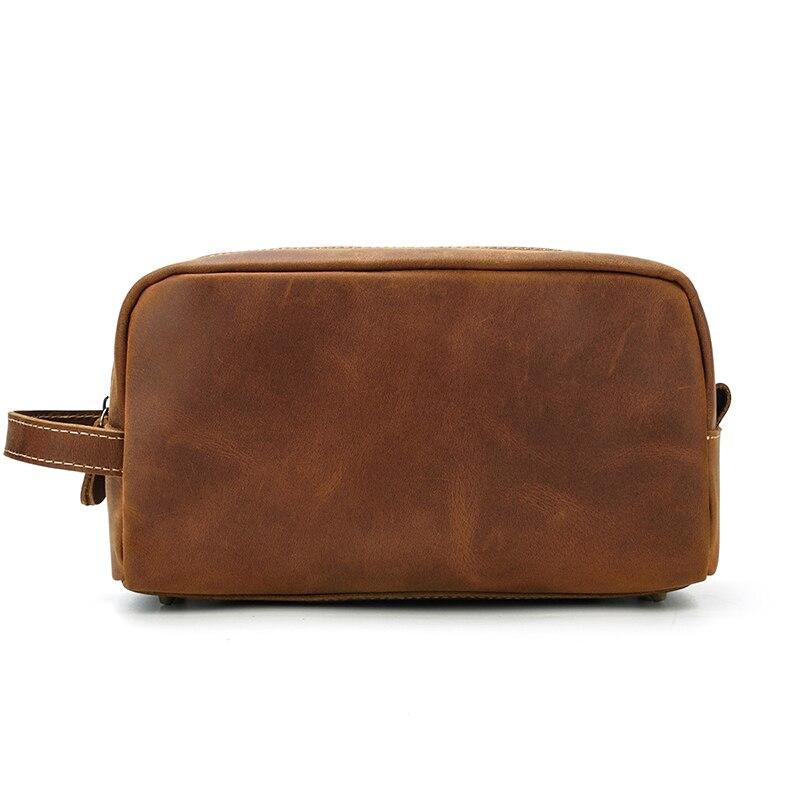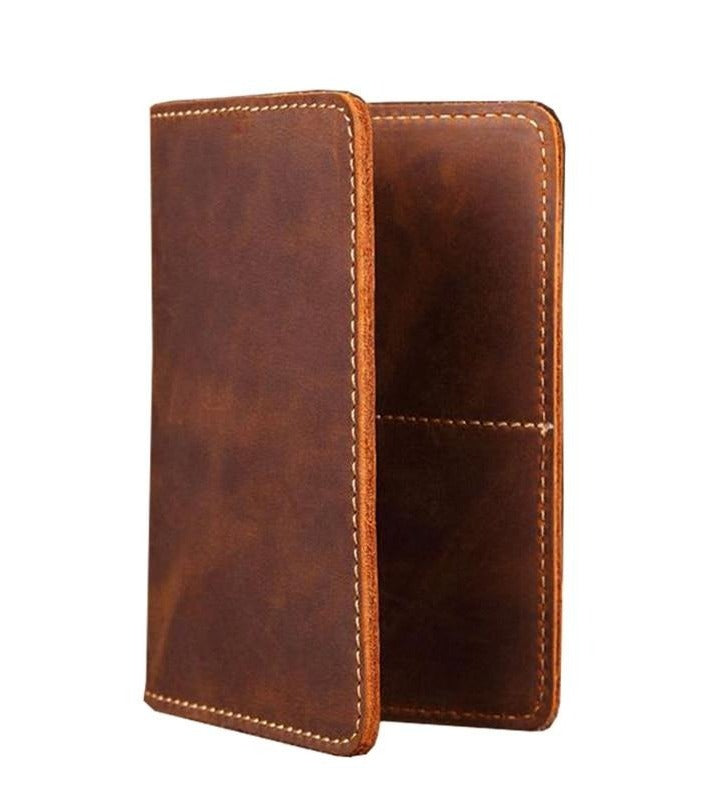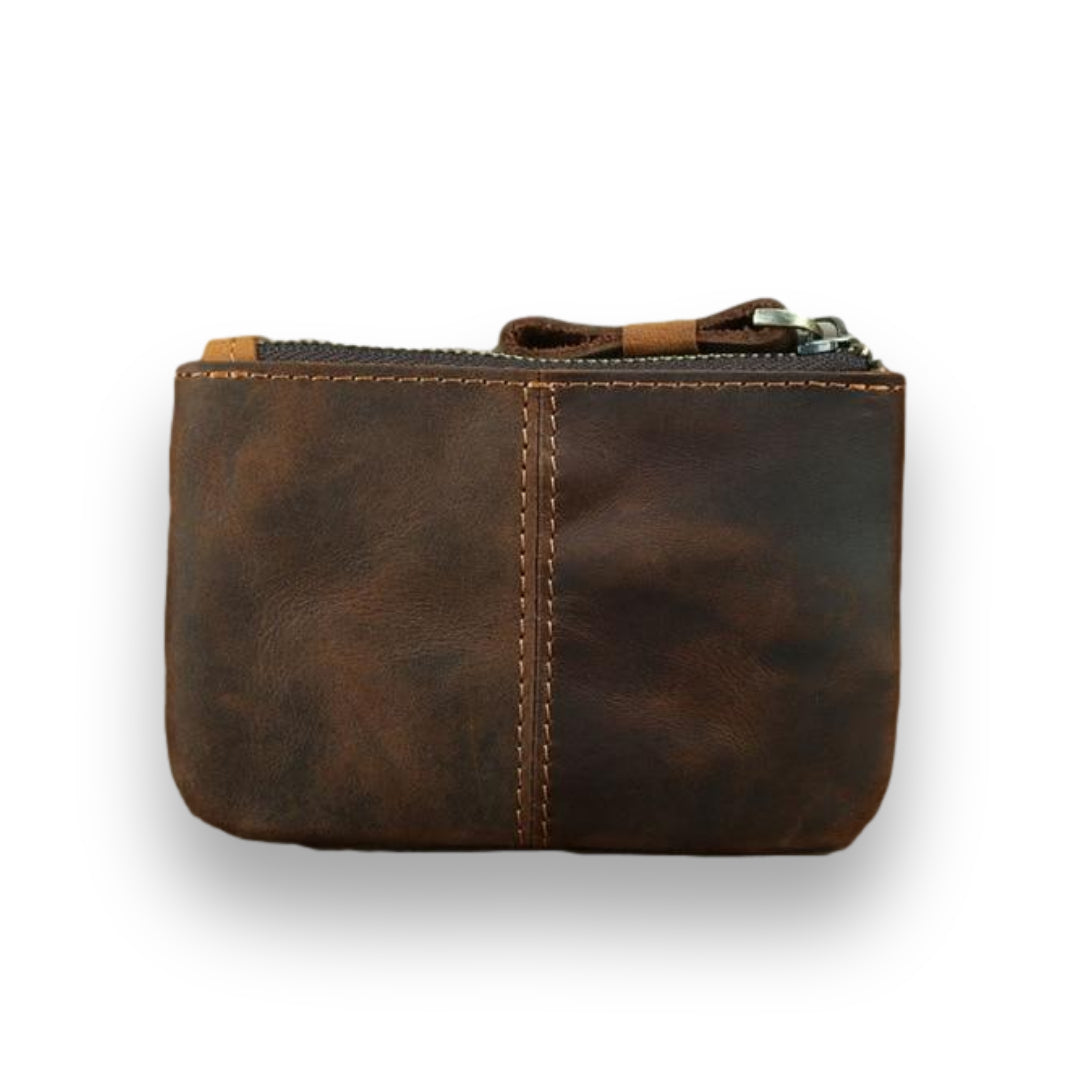From animal skin to leather. How do they do it? Leather-making is an ancient practice that has continued to exist for many centuries now. This ancient practice of turning raw animal hide into something strong and durable greatly relies on one certain phase. This is the leather tanning phase. This step is what turns rawhide into the reliable material we all know and love.
Key Takeaways
- Leather tanning is essential for transforming perishable animal hide into durable, useful material through chemical and physical processes.
- The choice between vegetable and chrome tanning methods affects both the quality of the final product and environmental impact.
- Modern tanning has become more efficient through industrialization, though traditional methods are still practiced in places like Morocco.
- The process involves multiple phases, each crucial for creating specific leather characteristics and qualities.
- Environmental considerations are becoming increasingly important in the leather industry, particularly regarding chemical tanning methods.
The Moroccan Legacy
A visit to a Moroccan tannery is not only a visual impression that stays, also the smell is unforgettable. The procedure of making leather has not changed much over the last decades and even centuries, neither have the working conditions, we were told.
In Marrakesh, the tannery is an enterprise run by about 50 families. The reputation of Moroccan leather was so great that the French word "maroquinerie" has become the general term for everything made from leather.
Understanding the Leather Making Process

Making leather is a long process that requires years to master and perfect. It involves quite a handful of steps in transforming raw hide into strong, durable, and beautiful leather products. There are also various ways to make leather; different methods involved in transforming rawhide to leather.
Of course, if you simplify the leather-making process there are merely three steps to it. The first step is to prepare the animal skin, the second is to tan the skin, and the final step is to finish the leather product. However, in this article, we are all about focusing on the tanning process. Truth be told, making leather mainly focuses on the leather tanning process. This is the step where the actual change happens. It is where animal skin transforms into something great. For many great centuries, the tanning process turned animal skin into useful things like clothes, shoes, and tools. Even if it is an ancient practice, you can make and tan your own leather with a little bit of knowledge and a whole lot of time and practice.
The Essence of Leather Tanning
Tanning is simply the process of treating the skin or hide of the animal to make leather. The place where the tanning process usually happens is at the leather tannery. A tannery, like the one in Morocco, is usually large-scale. It has numerous drums that are capable of tanning hundreds of animal skin at the same time. Additionally, the tannery in Morocco is really old. It is proof that tanning and leather production is an ancient art form. Likewise, two ancient civilizations like Sumer and India have also been practicing leather tanning for thousands of years.
Additionally, tanning is not just an ancient art form. While the animal skin soaks up the tanning agent it goes through chemical and physical change. Research has shown that tanning relies heavily on chemical reaction mechanisms that modify the protein structure of hides, thereby hindering decay and improving both durability and flexibility (Mamun et al., 2016; Ramamurthy et al., 2015). The end product is leather, however, not all will have the same quality. This is because tanning also involves different techniques and methods. Each technique or method or solution applied to the leather will produce a different change. This, therefore, makes the leather tanning process interesting and important to learn.
The Necessity of Tanning
The answer is really simple. It is to keep the animal skin or hide from rotting, decomposing, and putrefying. Once the animal is dead, the skin will take its natural course and begin to break down. There are many elements that usually break down and decompose the animal skin. It may be because of bacteria that eats away the flesh or the elements which will try to harden the skin or both. Tanning, therefore, prevents all of this from happening.
Tanning will permanently alter the protein structure of the animal skin. It will make the skin more durable and less likely to decompose. Different solutions offer different changes to the skin. Changes such as the change in color, flexibility, softness, or strength. However, whatever method or technique you use, the primary purpose of tanning is to preserve the skin. Tanning, therefore, preserves the animal skin and likewise creates leather in the process. Additionally, tanning will not only preserve the skin but also protect it from the elements. Protecting it from decomposing when it gets wet.
Methods of Leather Tanning
| Method | Agent | Time | Result |
|---|---|---|---|
| 🌿 Vegetable | Tree bark, leaves | 2–3 months | Patina, woody scent, durable |
| ⚙️ Chrome | Chromium salts | 1 day | Wet blue, soft, cheap |
| 🧠 Brain | Animal brain + smoke | Days (labor-heavy) | Supple, traditional |
| 🌱 Natural (Bog) | Acid bog water | Centuries | Mummified preservation |
| 🧪 Synthetic | Formaldehyde, aldehydes | Fast | Wet white, car-seat soft |
| ⚗️ Mineral | Alum, Zr, Ti salts | Hours–days | Light, stretchy |
| 🥚 Tawing | Alum + egg yolk | Moderate | White, ultra-soft |
Most Used: Chrome (90%+) | Premium: Vegetable
Being an ancient form of art, many have developed different methods or techniques of tanning. There are many ways to tan animal skin or hide. There are however two methods that are the most common. They are the vegetable tanning method and the chrome tan or chromium tanning method. There are also other alternative tanning methods that we will also be briefly discussing.
Vegetable Tanning Process
A tanning method that has been in practice since ancient times. The vegetable tanning method uses natural tannins from the bark and leaves of trees and plants. After the animal skin has been skinned, cleaned, and prepared the hides are placed in the tanning pit. These tanning pits are usually drums that contain tannin solutions of various strengths.
The vegetable tanning method takes time. The animal skin soaks inside the tanning pit for over a period of two to three months. According to ancient practice, the tanners move the animal skin from one drum to another. They typically move the animal skin to the next drum that has a solution progressively stronger than the last. The tanning agents penetrate the skin as the solution gets stronger and stronger. Additionally, since this method uses an organic solution, fermentation occurs. This gives the leather its distinct color and appearance. It also leaves the final product a distinctive sweet and woody fragrance. A smell that typically indicates real leather.
Natural Tanning Methods
Natural tanning happens when specific conditions occur. These conditions are usually present in bogs. The conditions include highly acidic water, low temperature, and a lack of oxygen. These certain conditions preserve the skin. It can, however, leave a severe tan that is similar to or identical to that of mummified dead bodies, also known as bog bodies.
Brain Tanning Process
Another form of natural tanning. This tanning technique is quite difficult to pull off. It is a labor-intensive way of tanning animal hides. This method usually uses skin from deer, elk, or moose. Tanners use the natural tannic acid from the animal to tan its own hide. First, they clean the skin thoroughly by scraping all the flesh, fat, and membrane off the flesh of the skin. The tanner then washes the skin and stretches it on a frame to dry. What is so unique about its method is that it uses a very unique and fascinating tanning solution. It actually uses a mixture of warm water and the mashed-up animal brain to tan the hide. Once they finish applying the solution they smoke the skin to complete the process.
Chrome (Chromium) Tanning Process
Unlike the ancient practice of vegetable tanning, chrome tanning or chromium tanning is relatively recent. It is also one of the most practiced methods of tanning leather. This is because it has certain advantages in comparison to other techniques of tanning, especially against vegetable tanning.
This recent method of tanning leather has two stages. The first stage involves soaking the animal skin in baths that containing acidic salts. The animal skin soaks inside the bath until they are ready for the next step. The next step is the chrome tanning proper. Once again the animal skins get to soak inside a bath. This time the bath contains chromium tanning agents such as chromium sulfate and chromium salts. Unlike the first stage, the acidity of the bath is reduced until the hide begins to absorb the chromium tanning agents. This process produces blue hides. They are better known as "wet blue hides."
The advantage of chrome tanned leather is that it is faster than vegetable tanned leather Vegetable tanning usually takes a few months to finish. However, chrome tanning can take up to as fast as one day, with aid of modern machinery. Chrome leather also costs less because it is less difficult to manufacture. What usually makes vegetable tanning expensive is because it is labor-intensive.
Alternative Chemical and Synthetic Tanning
This technique is the frequent alternative to chrome tanning. They do not apply it on their own but apply it together with other tanning solutions. Tanners usually combine it with either vegetable or chrome tanning solutions. This method of tanning uses artificial tanning agents such as formaldehyde, glutaraldehyde, phenols, and acrylates. They call these types of leather wet whites. Wet whites can also be made using aldehydes, aluminum, zirconium, titanium, or iron salts, or a combination of any of them. This method is likely to produce very soft leathers that are usually on car seats.
Mineral Tanning
Another method that uses chromium salts is mineral tanning. This method also speeds up the tanning process to days or even hours. It usually produces soft, pliable leather that is light.
Tawing Process
This method uses alum and other aluminum salts together with binders such as egg yolk or flour to tan the skin. This process is known to increase animal skin pliability, stretchability, softness, and quality.
Modern Leather Tanning Industry
Today, the leather tanning industry is now a more industrialized process. While some traditional methods persist, modern tanneries utilize advanced technology and precise quality control to create superior leather products. At Steel Horse Leather, we've experienced this evolution firsthand through the development of our Dagny Weekender bag. During the selection process for this premium weekender, we carefully evaluated different tanning methods to ensure the full-grain leather would meet our exacting standards for both durability and sophistication.
The Leather Tanning Process Overview
There are several steps involved in the ancient art of tanning leather. It also involves different techniques and methods that produce varying colors, textures, and finishes. In order for us to easily understand the tanning process, we divided them into four different phases. The four phases are namely the Beamhouse phase, the Tanyard phase, the Retanning phase, and the Finishing phase. Naturally, the leather tanning process takes months to complete. However, as we learn, later on, there are different methods that speed up the process.
There are certain steps to take before the actual tanning process begins. Naturally, we start with the preparation stage. This stage mainly involves skinning the animal once it arrives from the farm, slaughterhouse, or wherever the animal came from. In this stage, they will detach the skin from the animal and remove any scraps of flesh left from the process.
Beamhouse Operations
According to the Merriam-Webster dictionary, a beam house is a part or section of the tannery where the hides are prepared. Basically, the first phase is also all about preparing the leather. This phase mainly focuses on the animal hide, how to clean it, how to treat it, and why it is necessary to treat the animal hide. While all other steps are important, I believe that the first phase is the most important.
The Curing Process
The first step to any leather-making process is to stop the animal skin from decomposing. Otherwise, you would just have wet, rotting animal skin. This process is usually done as soon as possible. Decomposition usually begins within the first 5 hours, depending on the elements and bacterial growth. The way to stop the decomposition is to "cure" or preserve the hide.
Storage and Sorting
Once the hides are done curing they are now ready for storing and/or transporting. Storing and transporting the hides will also differ according to the method of curing you use. Like for example, you must store sun-dried hides in a dry place, preferably low in humidity. Likewise, if you freeze the hide then you must also store and transport them while there are still frozen. The hide is also sorted according to its weight and quality. Tanners also remove unnecessary or extremely damaged portions from the hide. The scraps are either discarded or reused to make lower-quality leather.
Soaking and Washing Process
After curing, the hides are usually salty and very stiff. To make them pliable and ready for tanning tanners soak them in water. This will reintroduce moisture to the leather fibers making them more usable. The water usually contains some chemicals like disinfectants to prevent the risk of bacteria growing.
The Liming Process
In this step, the hide is treated to remove any remaining organic substance on the hide. Examples are the epidermis, the roots of the hair, undesired fats, and soluble proteins. The hide is treated in a mixture of alkali and other additives. This solution will weaken the hair and its roots, any proteins, fats, collagens, and more. It basically makes it easier to remove unnecessary things for making leather.
Fleshing and Unhairing Process
After successfully liming the hide, it now becomes easier to remove any unwanted parts of the skin. Most parts of the hide are now weakened and unhairing can now being. the old school way of unhairing was to use hand tools and scrapping/scudding them off. It was a very labor-intensive process despite the hair already being weakened. These days unhairing is usually done mechanically. There are machines, rollers, and blades that do the job efficiently.
After removing the hair, the hide can now be fleshed. Fleshing removes the epidermal layer of the skin as well as the remaining hair roots. This process is generally known as "scudding", which mainly refers to doing it by hand. However, like unhairing, it can also be done mechanically.
This step is the last of the beam house operations. At this stage, the hide is clean and ready for the next phase of the leather tanning process.
The Tanyard Phase

The second phase of the leather tanning process is also the main leather-making stage. This phase basically takes the cleaned and disinfected hide and turns them into usable leather material. This phase will also take time depending on what method or technique of tanning you are using. Like for example, the vegetable will usually take around a few months to complete whereas chrome tanning takes only a few days. Machinery, tools, and the overall manufacturing capability are also a factor.
The Bating Process
This step aims to improve the properties of the leather such as its softness and pliability. To do this they must bring down the PH level of the leather to a lower level using buffering salts. This will reverse the previous liming process done during the beam house operations. This process is usually known as deliming and buffering. However, the whole process is collectively called Bating. This step is very important in terms of manipulating the preferred end state of the leather and its characteristics. To manipulate the leather specific enzyme agents are introduced. These agents work better at a lower PH.
The Pickling Process
This step of the leather tanning process is applicable only for chrome tanning. Chrome tanning agents are not soluble under the current PH level we are now. The process of pickling drops the chrome tanning PH to 2. Pickling will lower the PH of the collagen in the hide. This will allow tanning agents to easily penetrate the hide.
For vegetable leather, pickling is not necessary as the tanning can function at a higher or more basic PH level.
The Main Tanning Process
After going through all the steps of preparation, the hides are ready for tanning. We will briefly discuss the two mains methods of tanning, namely, vegetable and chrome tanning. We will not discuss the other methods of tanning since it has already been mentioned earlier.
Vegetable Tanning Details

An ancient practice and probably the oldest known common method of tanning. This method of tanning uses a naturally occurring tanning astringent from plants and tree bark. Some examples are chestnut, hemlock, mangrove, and oak bark. This natural solution is better known as tannins. The vegetable tannin will basically bind and cover the collages on the hide. This will make the hide less susceptible to bacterial growth. It will likewise be less water-soluble and more flexible or pliable. It can also be referred to as bark tanning since it mainly uses tree barks to create the tannin.
Contrary to common knowledge, the vegetable tanning process can take as fast as 2 days in the accelerated process. However, it usually takes up to 30 days or more in the standard process. Back then vegetable tanning is usually carried out in large pits. Tanners continue to agitate the leather within the solution, a very laborious process. Now, you will usually find them inside rotating drums which makes things easier. Additionally, tanners continue to expose the hide to stronger and stronger levels of the tannins as the process continues.
This method of tanning produces soft yet strong and a bit stiff leather. They are perfect for leather goods such as saddles, upper leather, tooling leather, sole leather, and belts. The color varies and is available in a few shades of yellow, brown, and even in reds.
Chrome Tanning Details
This method of tanning leather has become very popular due to its efficiency. It typically produces leather that is thin, soft, and stretchable. Chrome tanned leather is also resistant to shrinking in warm/heated water. The secret lies behind the changes within the leather itself. Unlike veg tanned leather, the tanning liquor not only binds to the collagen but also increases the space between the proteins in the hide. Chromium also penetrates better and at a much faster rate than the tannins. The whole process usually takes less than one day and requires less labor. The hides are milled in a single solution until the tanning process is complete. It is usually done in what they call a "one-bath" method where the PH level is around 2-4.
The Drying Process
Once the hides absorb all the tanning solutions it needs to dry. There are generally two ways to dry the leather. We call this method wringing. You basically squeeze the excess moisture out of the leather with large, heavy rollers. Another way is to dry using vacuum suction. After the leather is dry you proceed to the next step.
The Splitting Process
In order to turn leather into different products, it must be of the right thickness. For example, leather gloves and wallets require thin leather. Bags and saddles on the other hand require something thicker. This is why there is a need to split leather. It also makes leather easier to work with. Splitting is the "longitudinal cutting" of the leather into thinner layers. When leather is split, its different layers also have different characteristics and quality. A diagram of a leather's cross-section will help you identify the different layers and their names. They are full-grain leather, top-grain, and genuine leather to name a few.
Furthermore, if you want an even more refined or thinner leather you can do so by shaving. Shaving can remove thinner layers of leather than cutting.
The Retanning Phase
Congratulations, the hide has been tanned successfully. At this phase, you may consider the tanned hide as usable material. You might be wondering why we have a retaining phase when we just finished tanning. The purpose of retanning is to refine the leather. After the first tanning session, there are still more tangible qualities on the leather that we can influence. Qualities such as color, softness, flexibility, pliability, and density can still be manipulated.
For efficiency's sake, retanning is done in sequence inside a rotating drum that washes and dries the leather in-between steps. Think of this phase as doing your laundry on an automatic laundry machine.
Appearance Alteration
Altering the appearance of leather is nothing new. Leather is often colored, or, bleached into a wide array of looks. The most common practice is to dye leather. There are two general classifications of dye: water-soluble and oil-based. Dyeing will also affect the properties of the leather. Depending on what kind of dye you use its flexibility, softness, and even storage life will be affected. There are four main types of dye, which are Acid, Basic, Direct, and Sulfur. Each type of dye offers different benefits from one another.
On another note, veg tan leather is generally not dyed. This is because they already have such a pleasing and natural appearance that dyeing it would just ruin the leather.
The Fatliquoring Process
After going through so much, the leather tends to become dry and stiff. Fatliquoring applies lubricants to the leather to make it stronger and more flexible.
Setting and Drying
To ensure that the previous treatments result in an even overall finish the leather is to be set out to dry. The usual practice is to air dry the leather. To ensure that drying is uniform the leather is stretched and/or mounted to expose to as much airflow. However, mechanical drying is also available. This is generally done similar to wringing where they press the leather with large, heavy rollers to push the moisture out. Vacuum suction is likewise another viable method.
The Finishing Phase
The final phase to the leather tanning process and the overall leather making process. This phase focuses mainly on refining the leather to a specific quality intended for a specific use. Here are some examples of different ways to apply finishing to the leather.
Conditioning Process
For leather to last as long as it should conditioners are applied. Conditioners help the leather retains some helpful moisture and oils that keep its fibers in great shape over time. Different types of conditioners will vary upon different types of leather.
Staking Process
If what is intended is to have a smoother, more supple material leather usually goes through the process of staking. Staking is like tenderizing your meat with a mallet. Machines beat the leather to soften its texture. Of course, you can also do this manually although it will cost more time and manpower.
Buffing Process
Buffing is usually done when you want the leather to have a smoother touch. This also gives the leather a more grainy look. The process of buffing usually involves sanding down the leather in a sanding drum.
Surface Pressing
Another technique that greatly changes the appearance of leather. Surface pressing uses rollers to imprint a pattern into the leather. This also creates texture on the surface of the leather. A common example of surface pressing is embossing.
Advantages and Disadvantages of Leather Tanning
Leather tanning is great because it creates leather. A material that is not only strong and durable but beautiful as well. It is also a material that can be turned into many things. From accessories to clothing to furniture. While there are many great things that come out of leather tanning there are also bad things.
For example, leather tanning promotes the killing of animals to harvest their leather. That is why many turn to the alternative such as vegan leather. It is also a smelly process. The reason why tanneries used to be far away from towns or a community.
Environmental Impact
Leather tanning has been called out for its environmental impacts, mainly due to water pollution. It lies between the two common methods of tanning. Vegetable tanning has a smaller impact on the environment since it mainly uses biodegradable and organic materials. After tanning, the solutions are usually dumped into bodies of water which eventually dissolve in the water.
Industrial advancements have significantly streamlined tanning processes, with chrome tanning now capable of finishing leather in as little as one day compared to the several weeks required for vegetable tanning. However, this efficiency comes with environmental trade-offs, particularly regarding toxic waste generation (Saravanabhavan et al., 2003; Cui & Qiang, 2019). To address these concerns, the industry is increasingly adopting cleaner production initiatives that employ enzymatic processes to minimize chemical use and reduce wastewater contamination from tanning operations (Shi et al., 2016)
Chrome tanning on the other hand is what causes major problems. It uses harmful chemicals that will affect health and the environment. It is especially harmful to the ecosystem where they dispose of chemical wastes. Moreover, studies found that frequent exposure to these chemicals has frightening health risks. Workers at tanneries are therefore very vulnerable to these risks. Frequent and long exposure may lead to cancer and other diseases.
The leather tanning industry is evolving toward more sustainable practices, driven by both consumer demand and stricter regulatory standards. Modern approaches include the use of metal-free tanning agents and enhanced waste management techniques aimed at mitigating the industry's environmental footprint (Cui & Qiang, 2019; Hansen et al., 2003). These innovations represent a crucial shift toward balancing the ancient craft of leather-making with contemporary environmental responsibilities.
Our Mastery in Traditional Leather Craftsmanship
At Steel Horse Leather, our deep understanding of leather tanning and craftsmanship comes from years of hands-on experience and dedication to preserving traditional leather-making techniques. Our master artisans have spent decades perfecting their craft, working intimately with various tanning methods and leather types to create exceptional products that stand the test of time. This extensive experience allows us to share detailed insights into the leather-making process with authority and practical knowledge.
Our commitment to leather craftsmanship extends beyond mere production. We've developed strong relationships with tanneries and leather suppliers worldwide, giving us unique insights into both traditional and modern tanning processes. Our team has personally visited and vetted numerous tanning facilities, allowing us to understand the nuances of different tanning methods - from ancient vegetable tanning techniques to modern chrome tanning processes. This hands-on experience enables us to provide accurate, practical information about leather production while maintaining our commitment to ethical and sustainable practices.
What sets our expertise apart is our holistic approach to leather crafting. We don't just work with finished leather; we understand the entire journey from raw hide to finished product. Our artisans' deep knowledge of leather characteristics, tanning processes, and finishing techniques allows us to explain these complex processes in practical, accessible terms. This expertise isn't just theoretical - it's applied daily in our workshop, where we transform carefully selected leather into durable, beautiful products that showcase the best qualities of properly tanned leather.
Frequently Asked Questions
What Is The Purpose Of Leather Tanning?
Leather tanning prevents animal skin from decomposing and rotting by permanently altering its protein structure. This process makes the skin more durable, less likely to decompose, and resistant to water damage while creating usable leather material.
What Are The Main Methods Of Leather Tanning?
The two primary methods are vegetable tanning, which uses natural tannins from tree bark and plants, and chrome tanning, which uses chromium sulfate and salts. Vegetable tanning takes several months but produces naturally colored leather, while chrome tanning is faster and more cost-effective.
How Long Does The Tanning Process Take?
The duration varies by method. Traditional vegetable tanning can take 2-3 months, while modern chrome tanning can be completed in as little as one day. The total time also depends on the specific techniques and machinery used.
What Are The Environmental Impacts Of Leather Tanning?
While vegetable tanning has minimal environmental impact due to its use of biodegradable materials, chrome tanning can cause significant environmental concerns due to chemical waste and water pollution. Chrome tanning also poses potential health risks to workers through chemical exposure.
What Are The Different Phases Of Leather Tanning?
The leather tanning process consists of four main phases: Beamhouse (preparation and cleaning), Tanyard (actual tanning), Retanning (refinement and color treatment), and Finishing (final conditioning and surface treatment).
Conclusion
Leather tanning is a marvelous process that involves science and human innovation. It is a process that requires knowledge, skill, and experience. Leather tanning also requires a great deal of time to finish. Likewise, it requires time to perfect. If you own any leather, it is about time you take a pause and appreciate the whole process.
References
Cui, L., & Qiang, X. (2019). Clean production for chrome free leather by using a novel triazine compound. Journal of Renewable Materials, 7(1), 57-71. https://doi.org/10.32604/jrm.2019.00118
Hansen, M., Johansen, J., & Menné, T. (2003). Chromium allergy: significance of both cr(iii) and cr(vi). Contact Dermatitis, 49(4), 206-212. https://doi.org/10.1111/j.0105-1873.2003.0230.x
Mamun, M., Hosain, M., Ahmed, S., Zohra, F., Sultana, R., Khan, M., … & Hoq, M. (2016). Development of an alternative enzyme-assisted dehairing method of animal skins using proteases from bacillus licheniformis mzk05m9. Bangladesh Journal of Microbiology, 33-37. https://doi.org/10.3329/bjm.v32i0.28475
Ramamurthy, G., Ramalingam, B., Katheem, M., Sastry, T., Inbasekaran, S., Thanveer, V., … & Mandal, A. (2015). Total elimination of polluting chrome shavings, chrome, and dye exhaust liquors of tannery by a method using keratin hydrolysate. ACS Sustainable Chemistry & Engineering, 3(7), 1348-1358. https://doi.org/10.1021/acssuschemeng.5b00071
Saravanabhavan, S., Aravindhan, R., Thanikaivelan, P., Rao, J., & Nair, B. (2003). Green solution for tannery pollution: effect of enzyme based lime-free unhairing and fibre opening in combination with pickle-free chrome tanning. Green Chemistry, 5(6), 707. https://doi.org/10.1039/b305285k
Shi, J., Puig, R., Jun, S., & Lin, W. (2016). A comprehensive evaluation of physical and environmental performances for wet-white leather manufacture. Journal of Cleaner Production, 139, 1512-1519. https://doi.org/10.1016/j.jclepro.2016.08.120


























